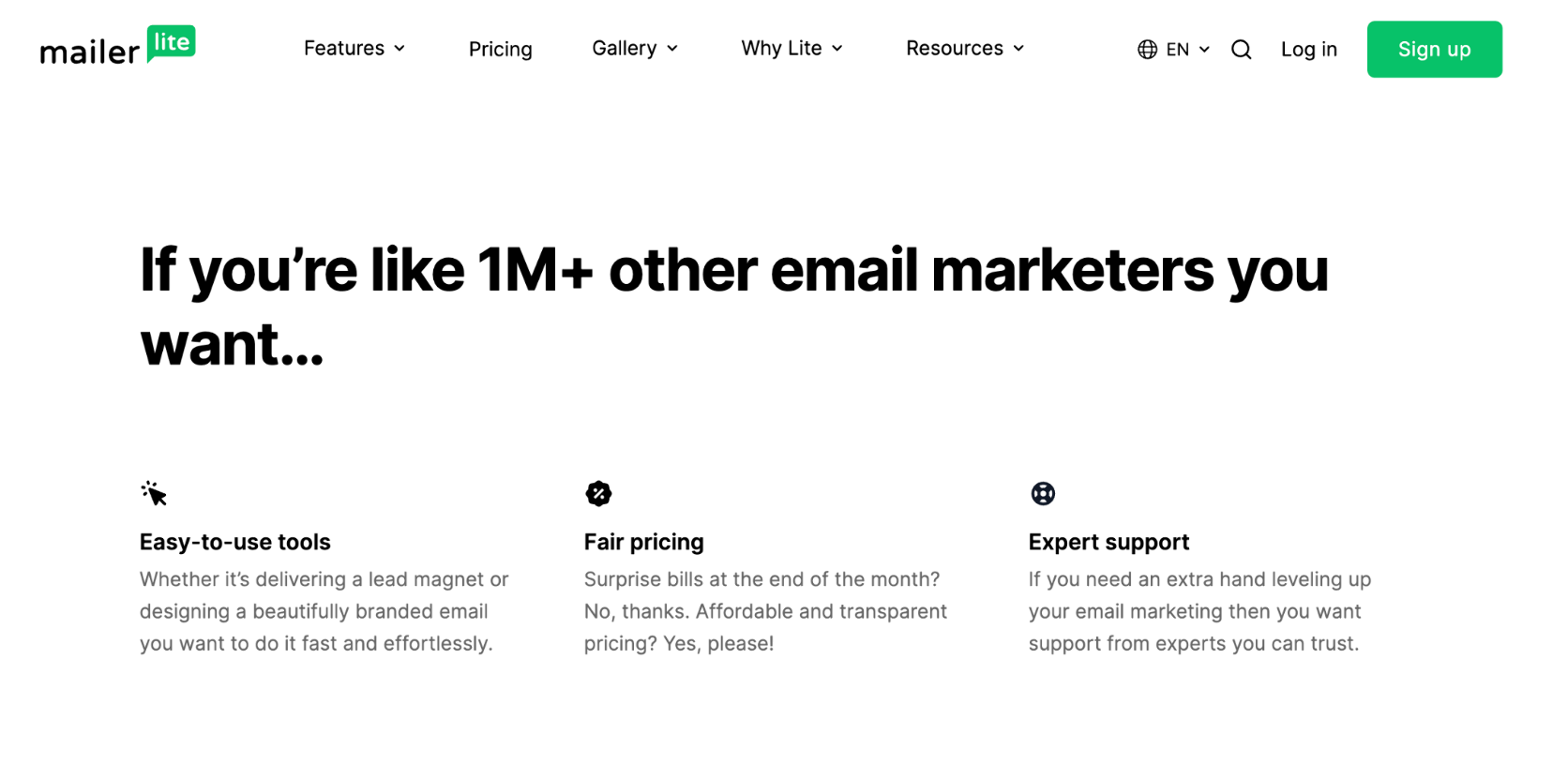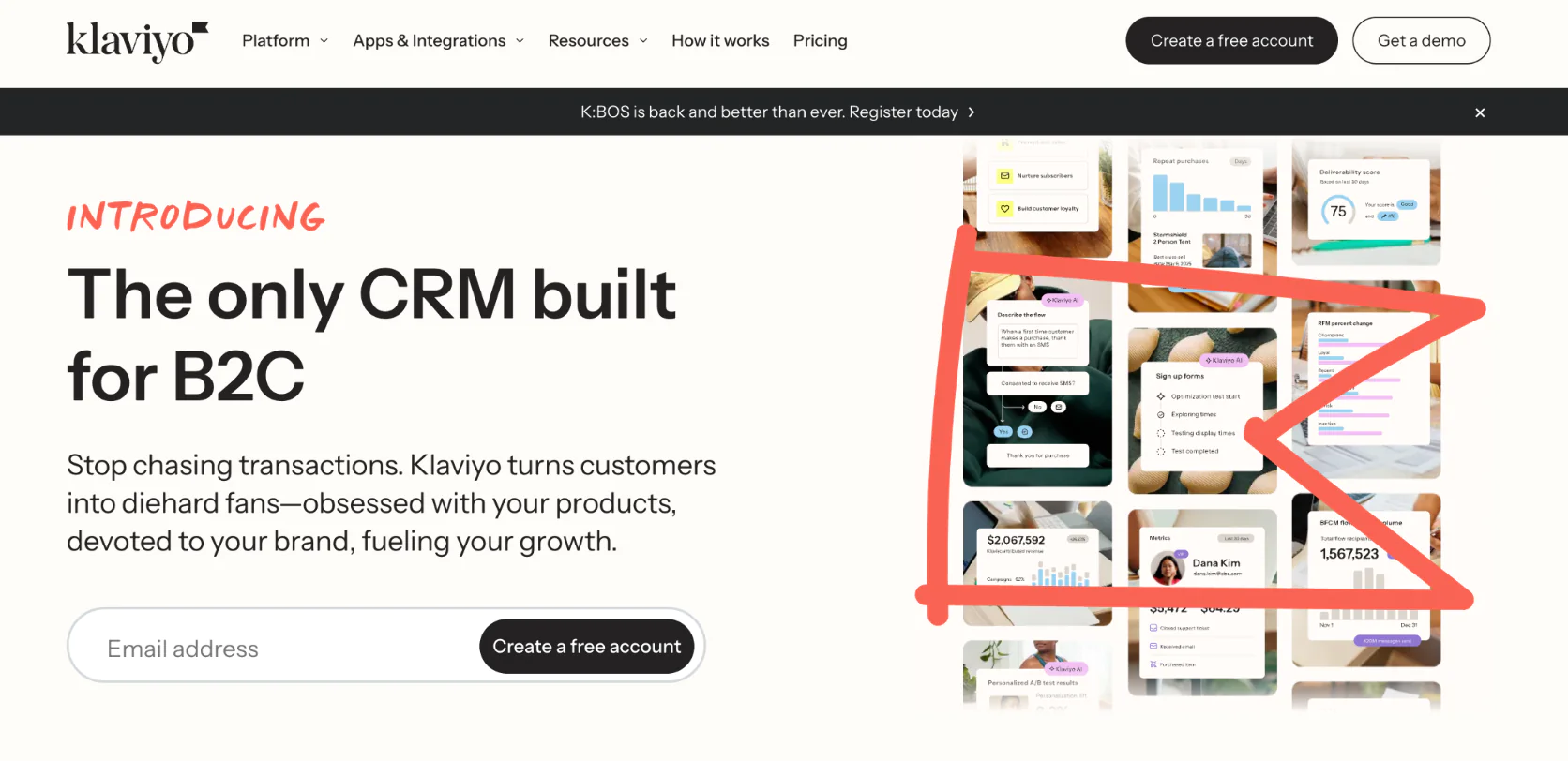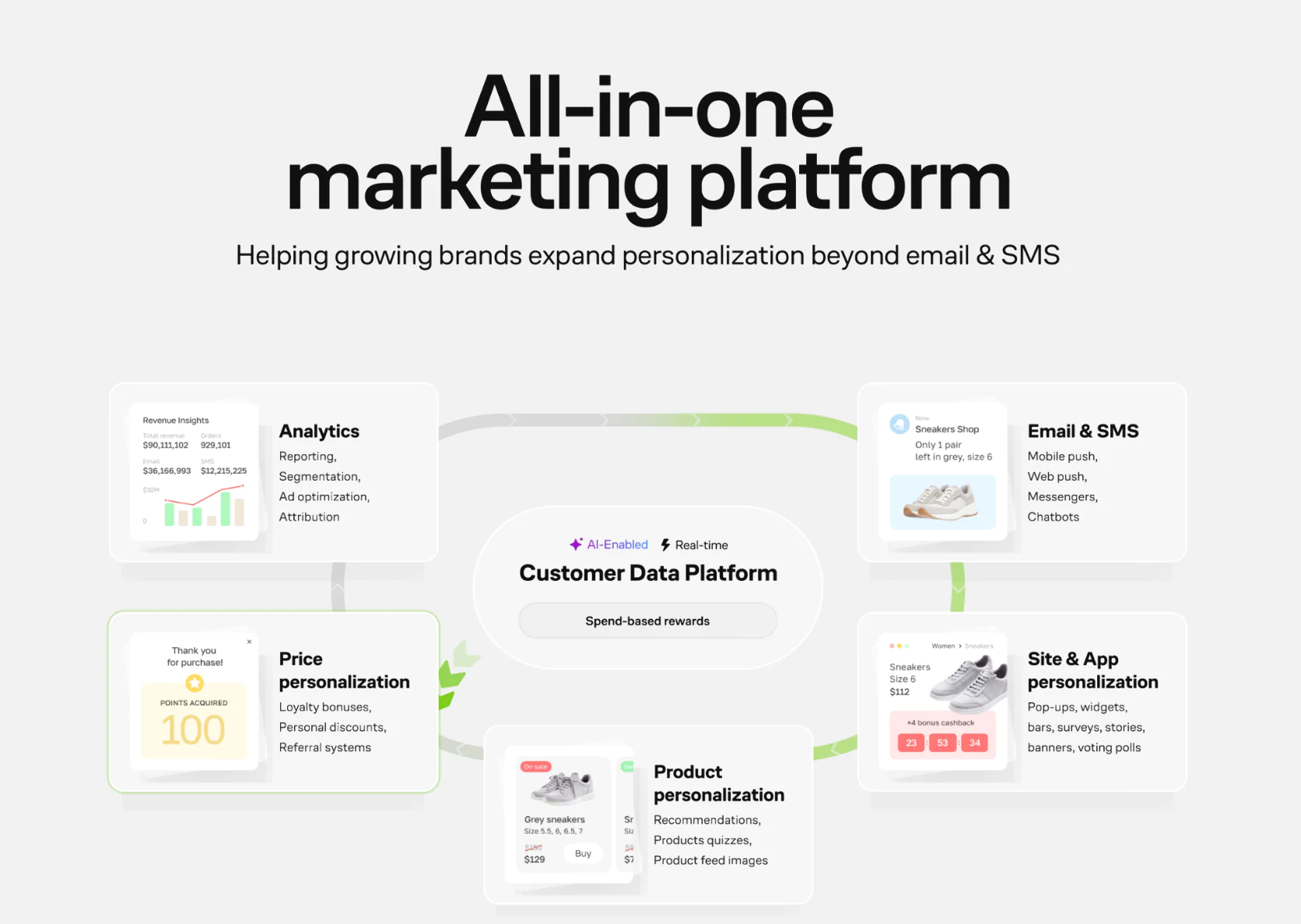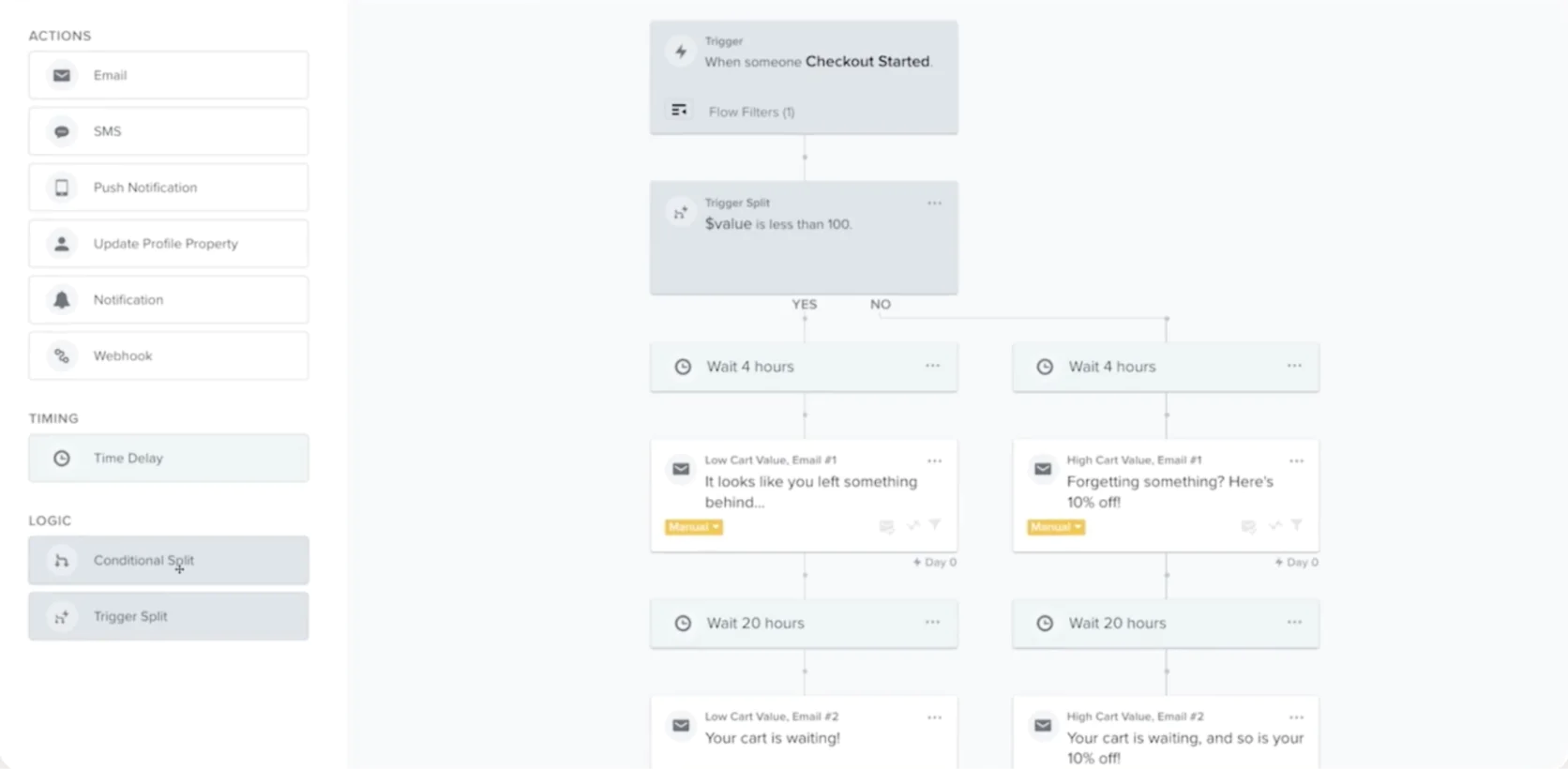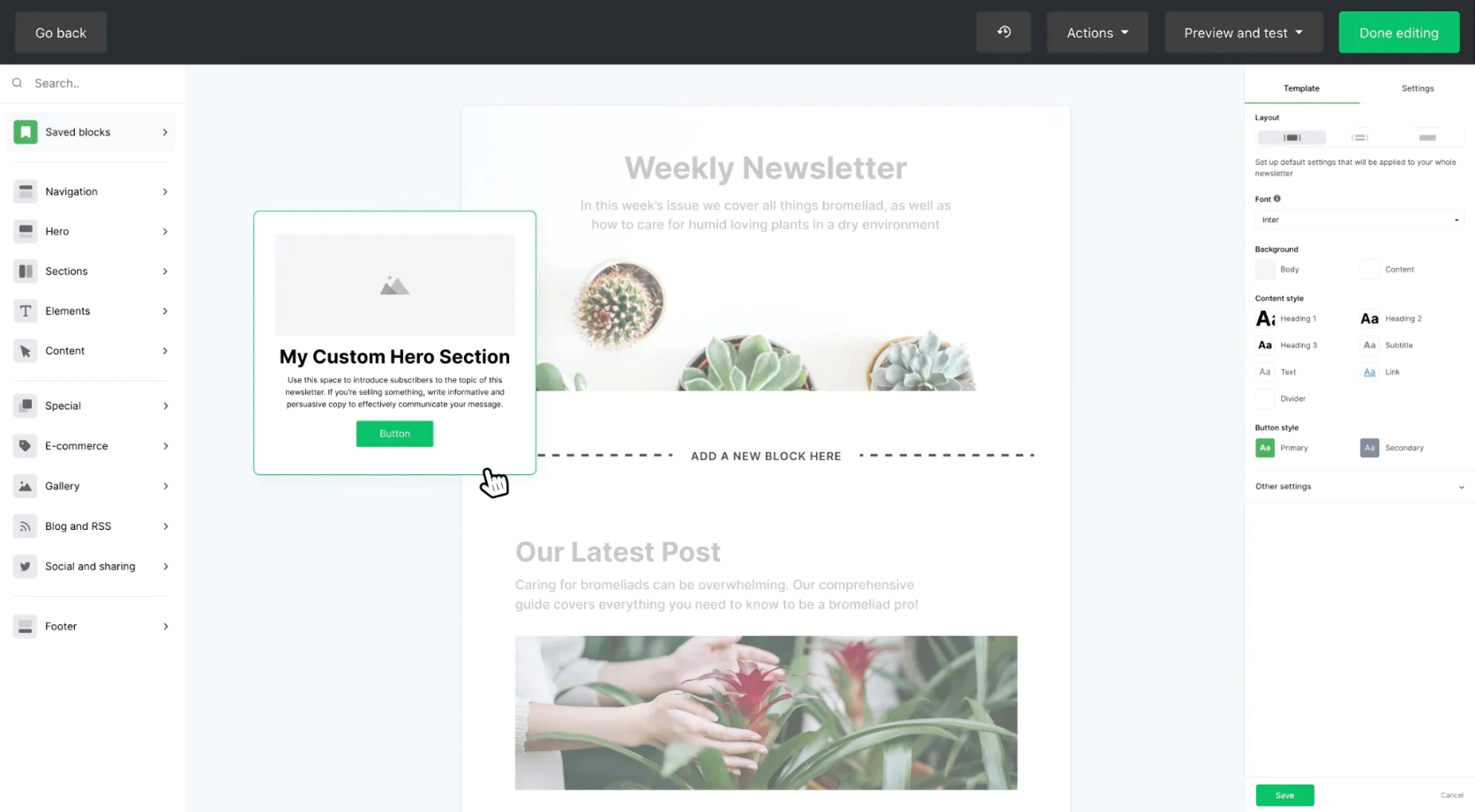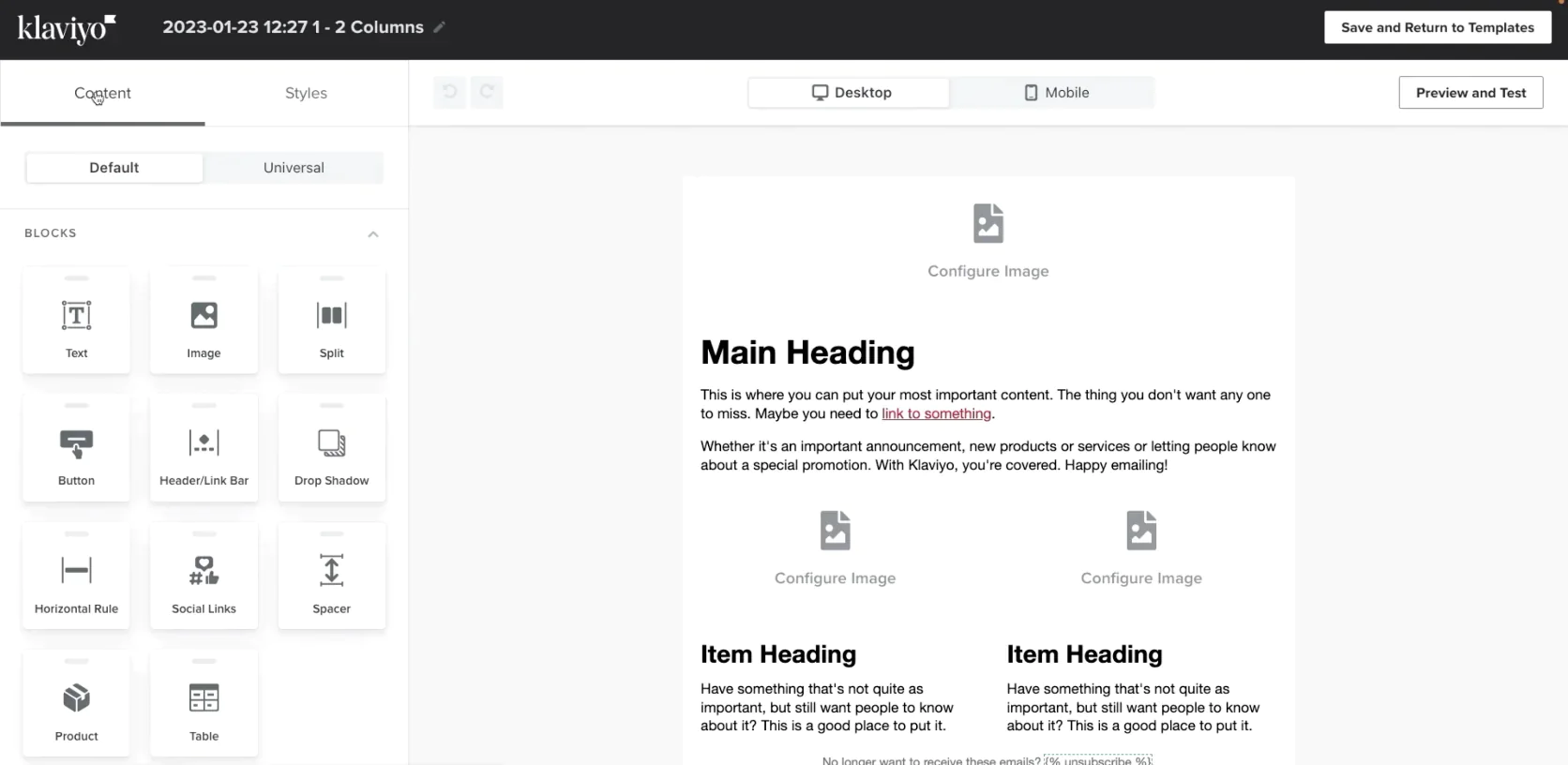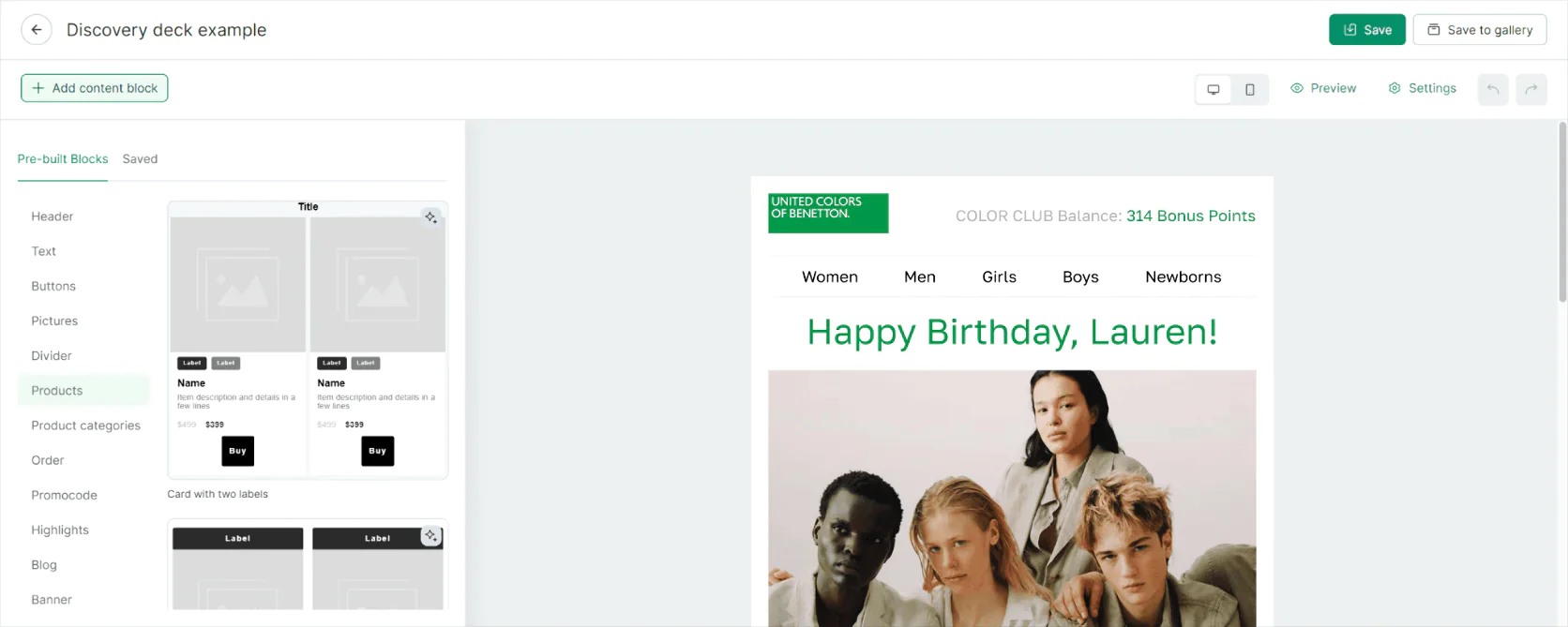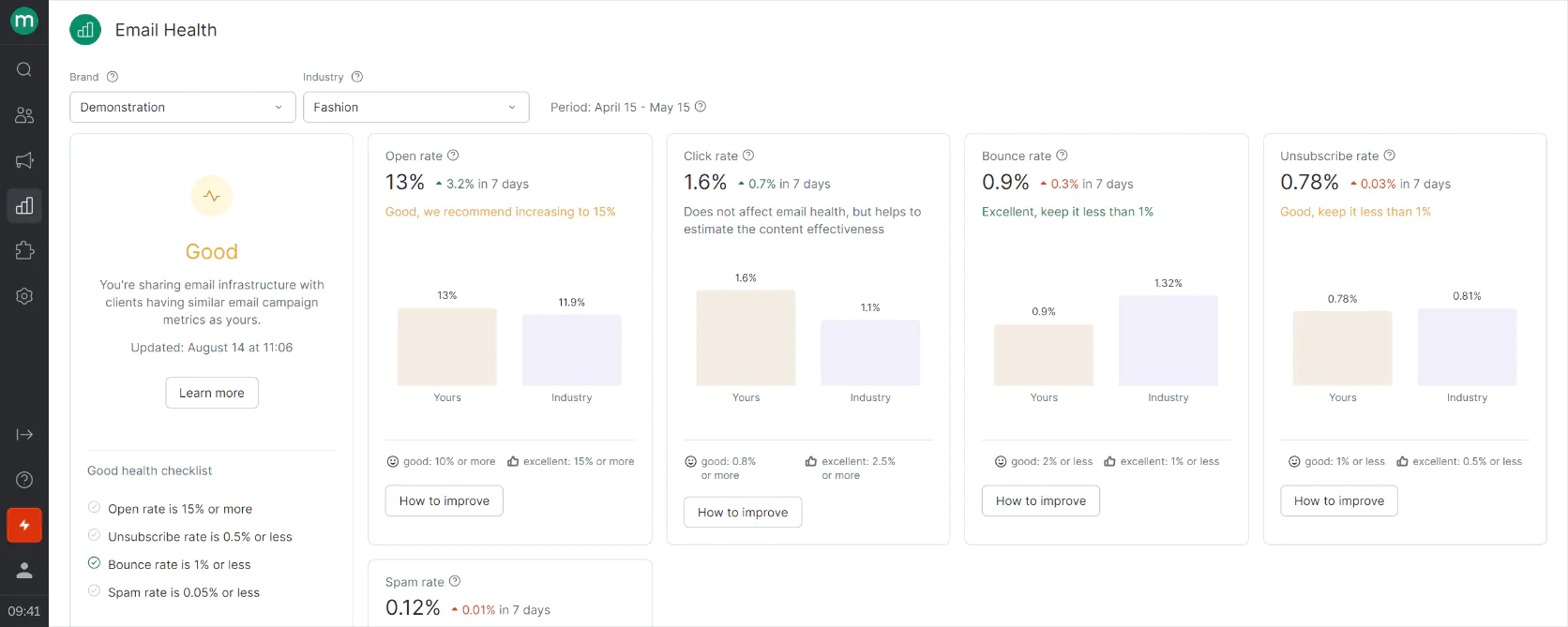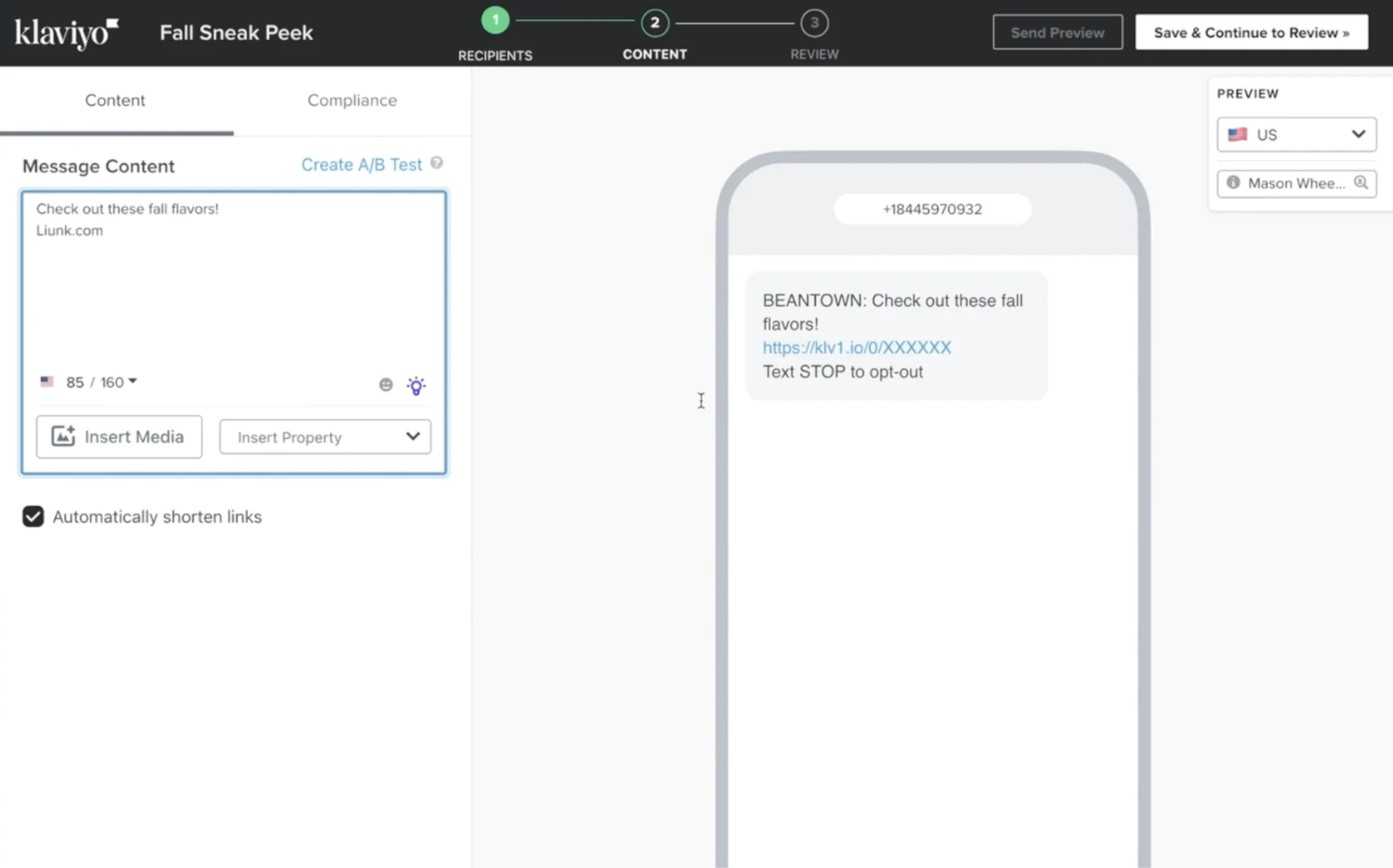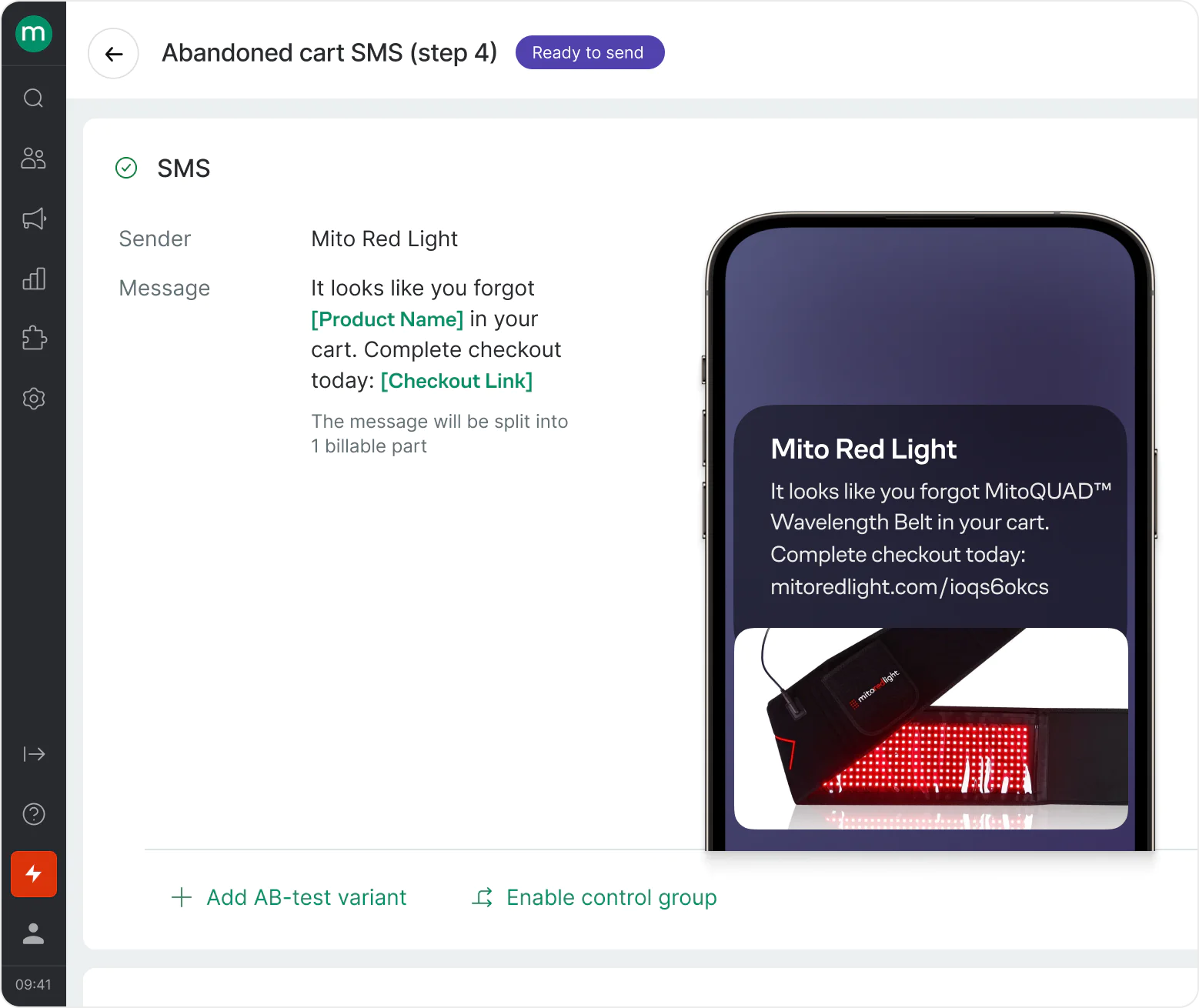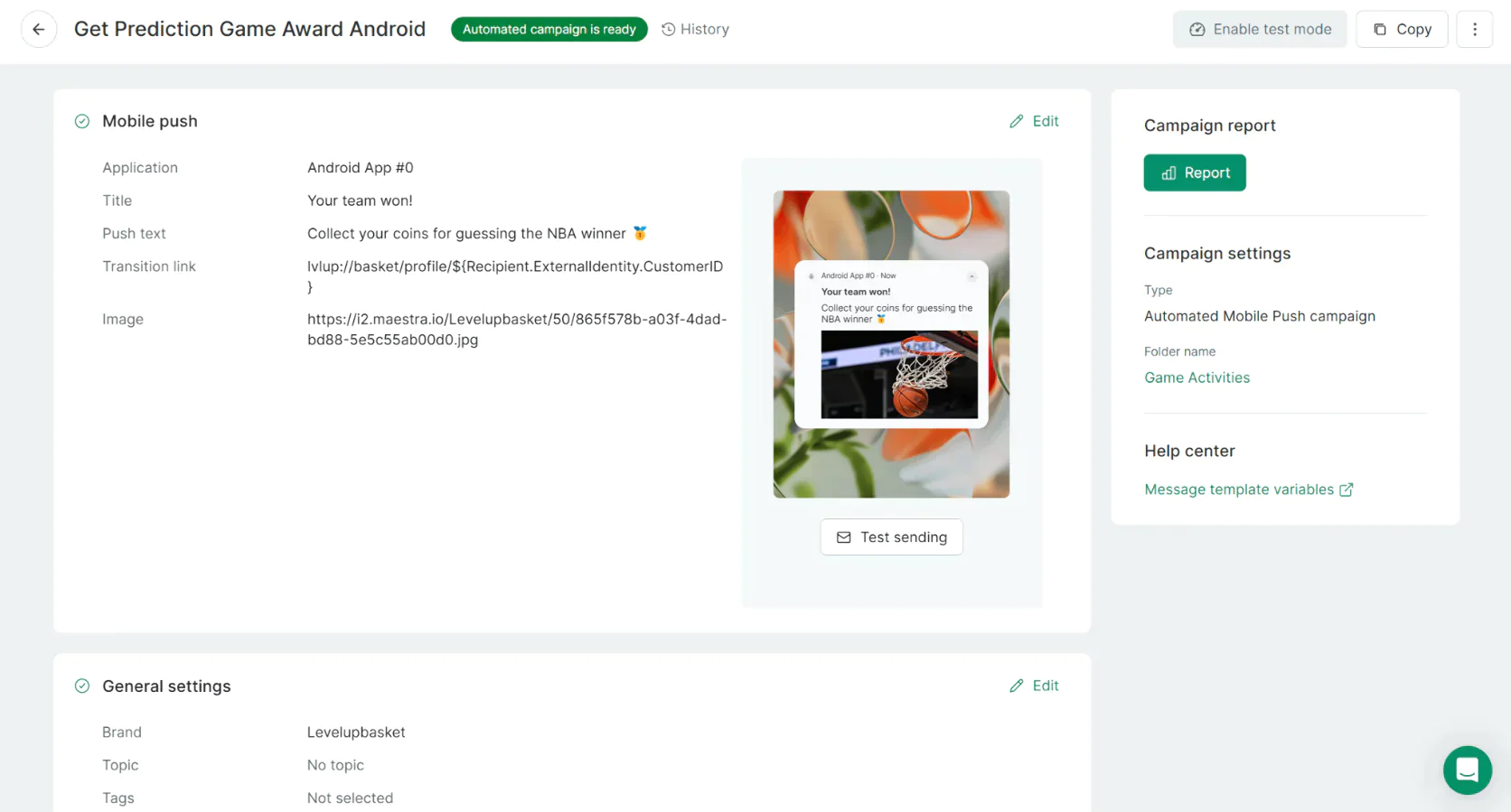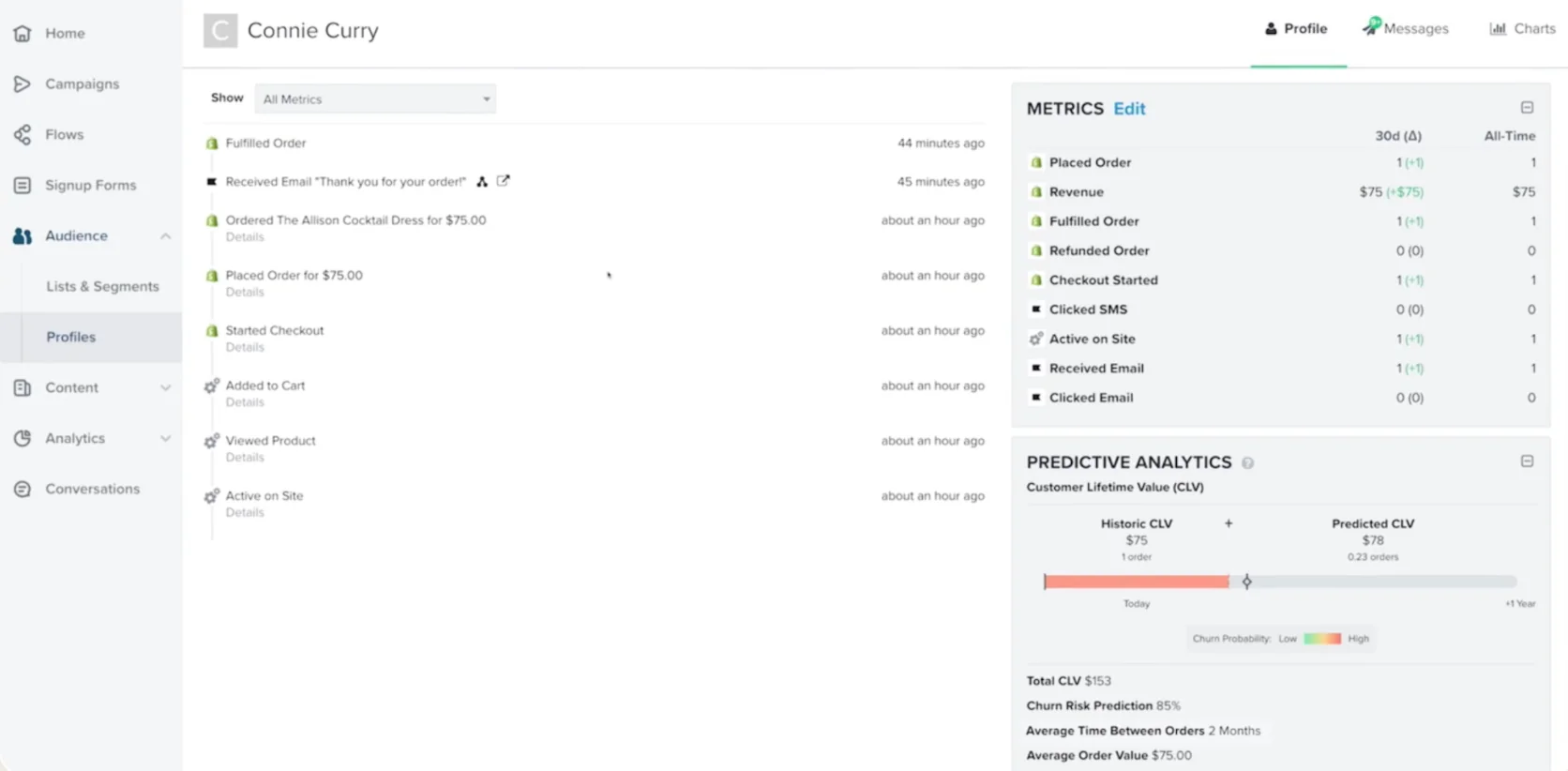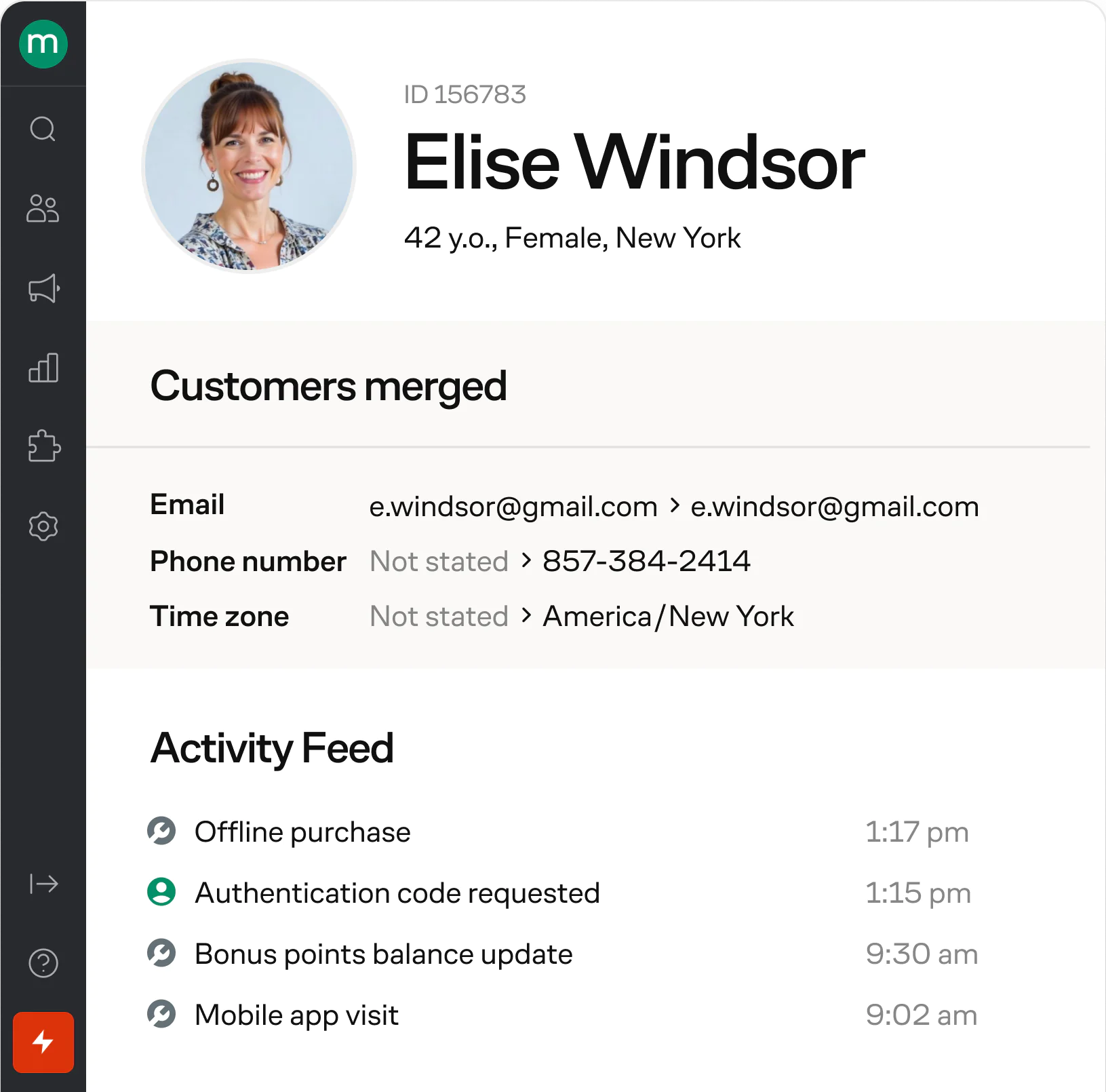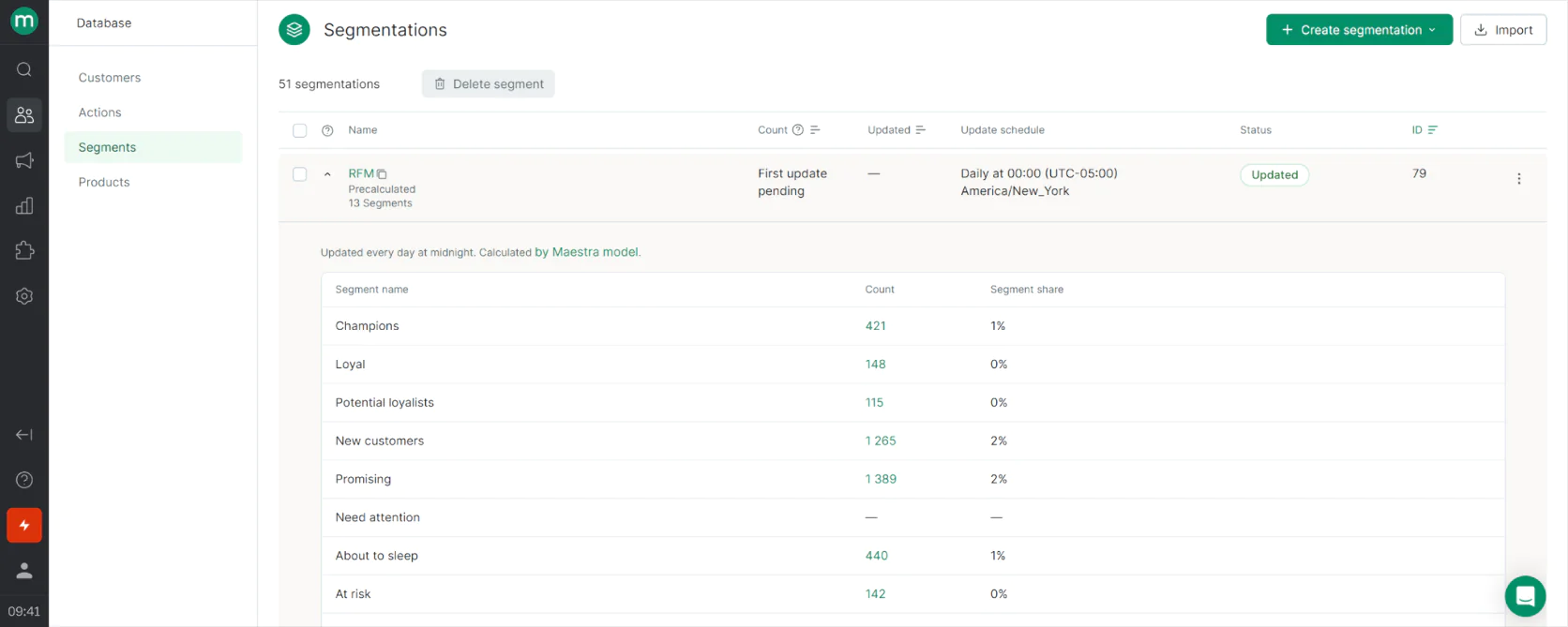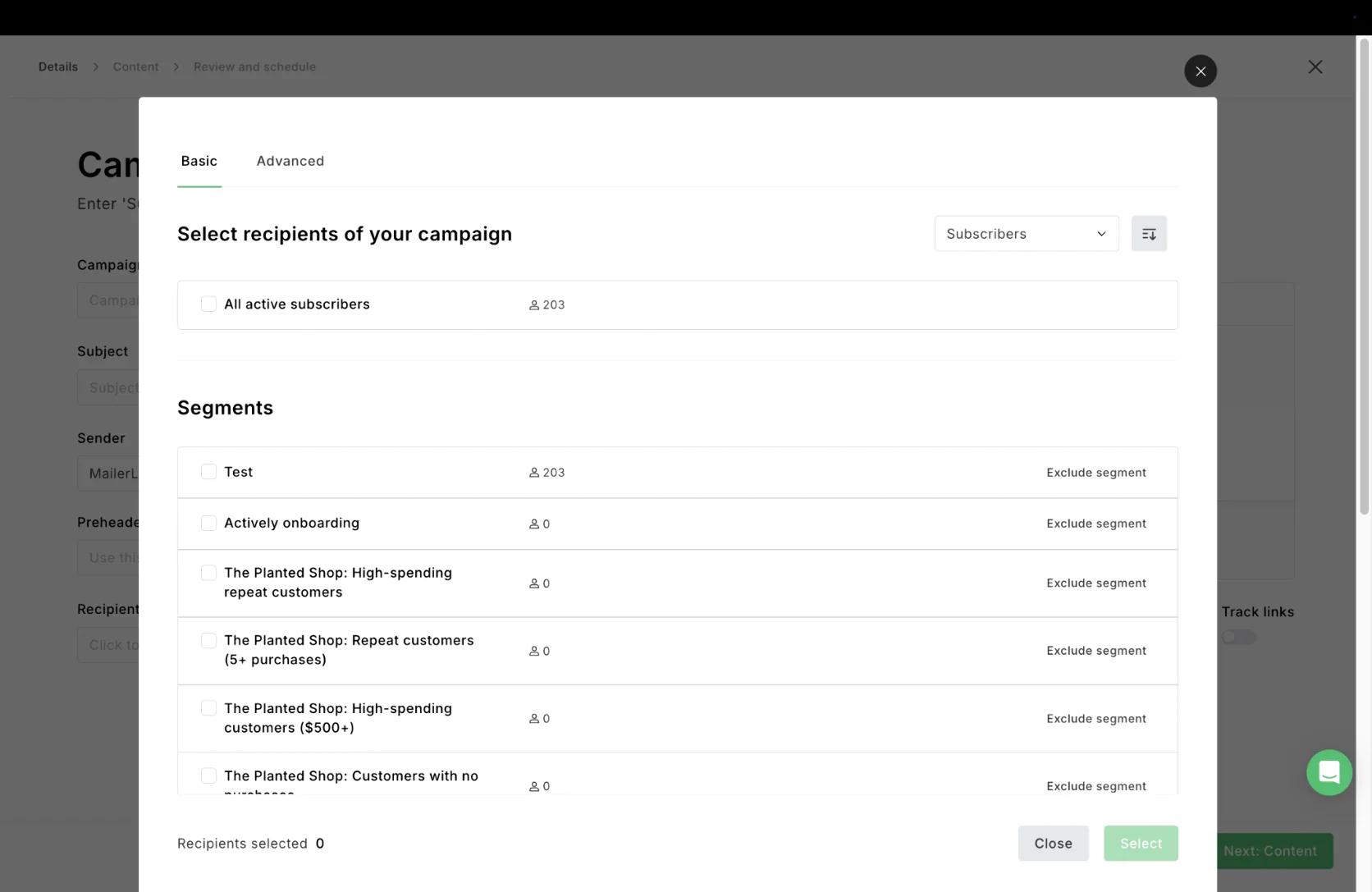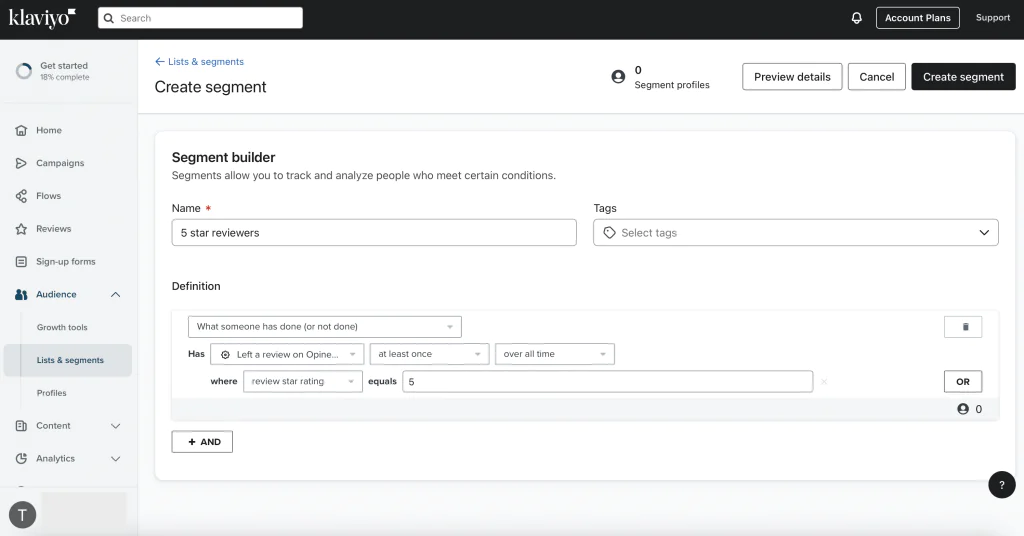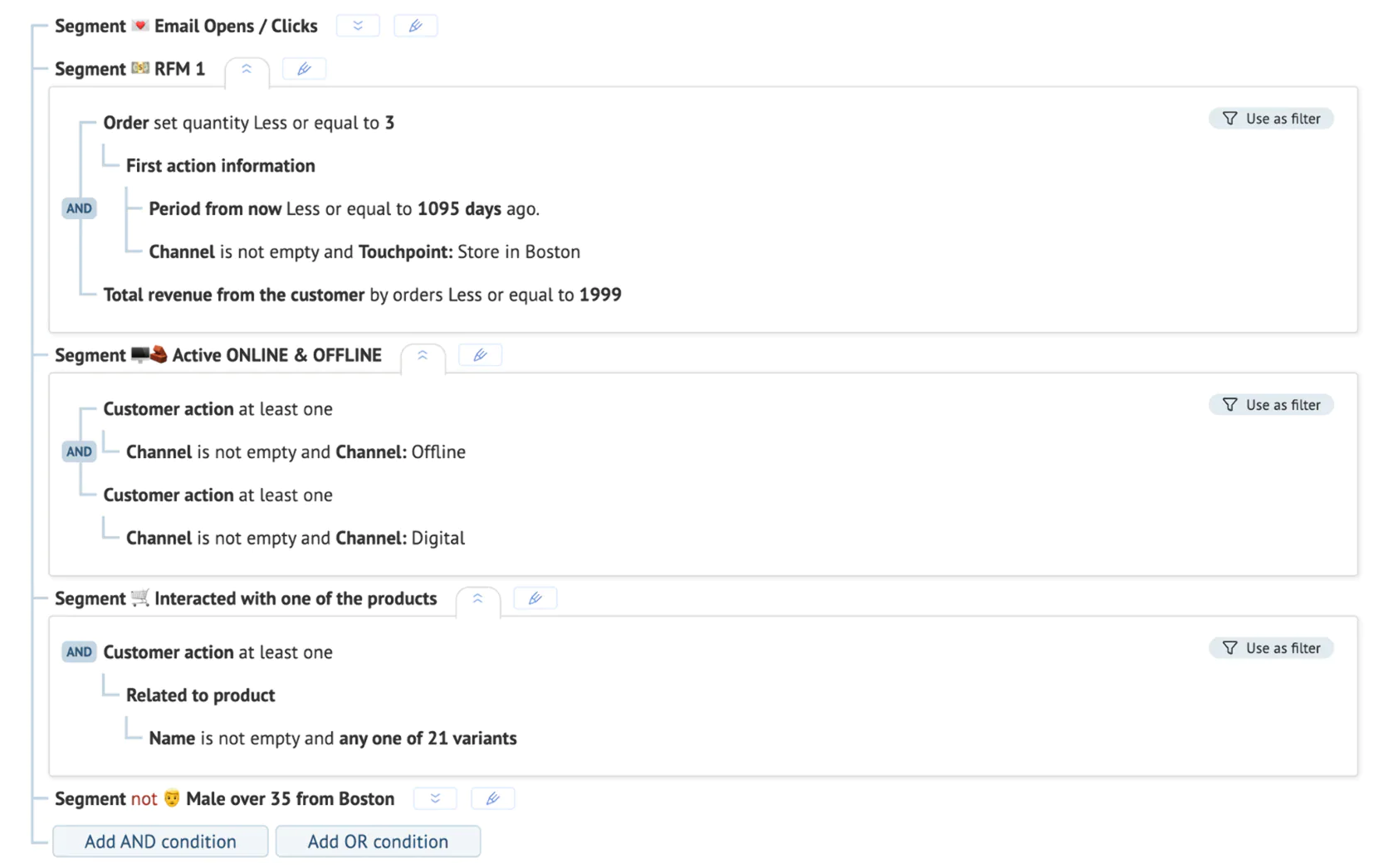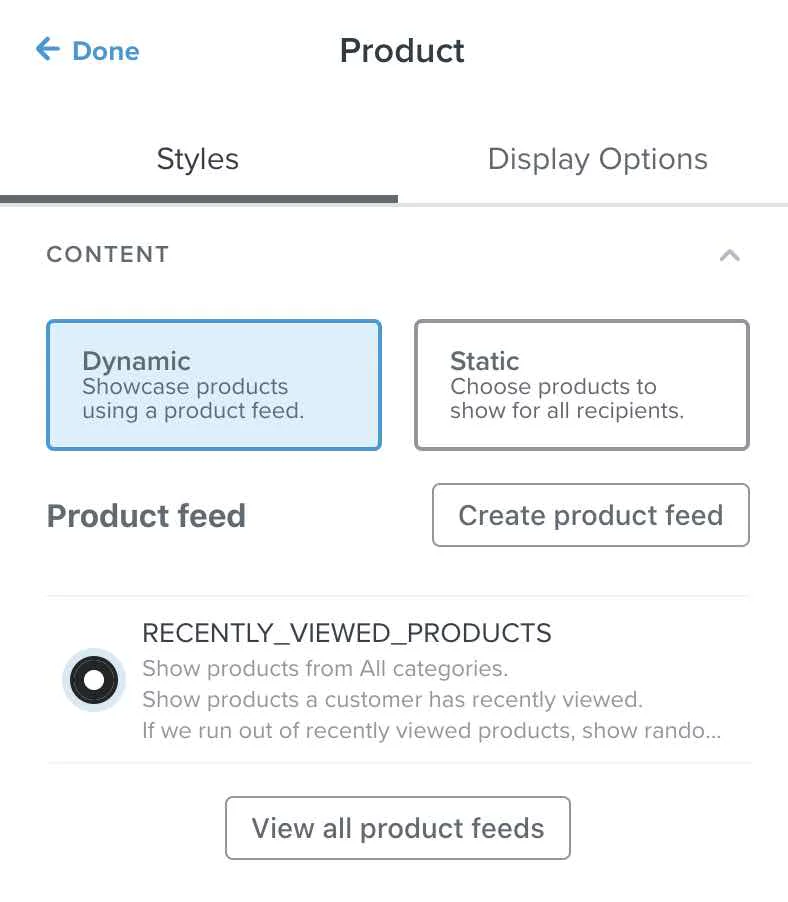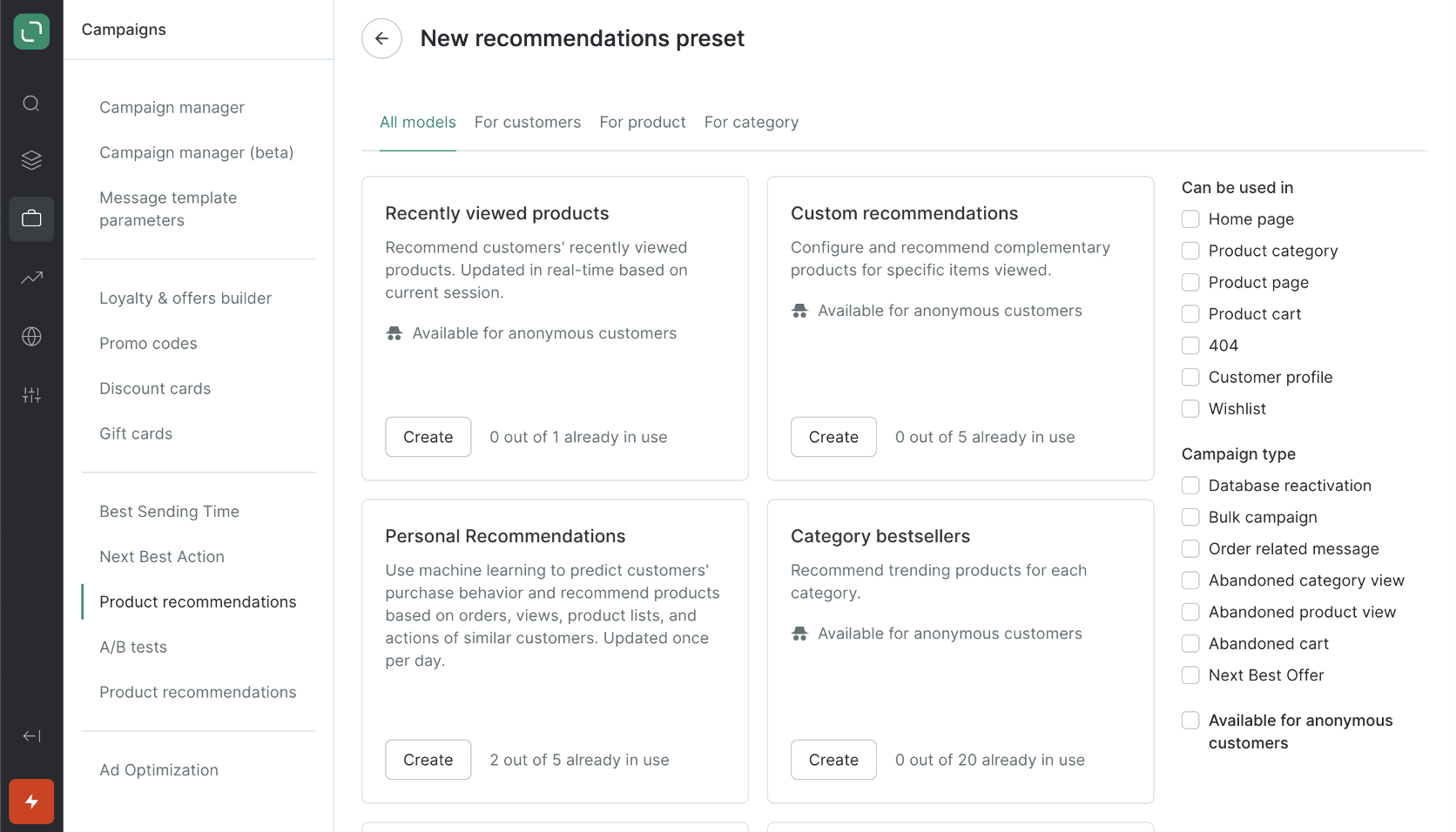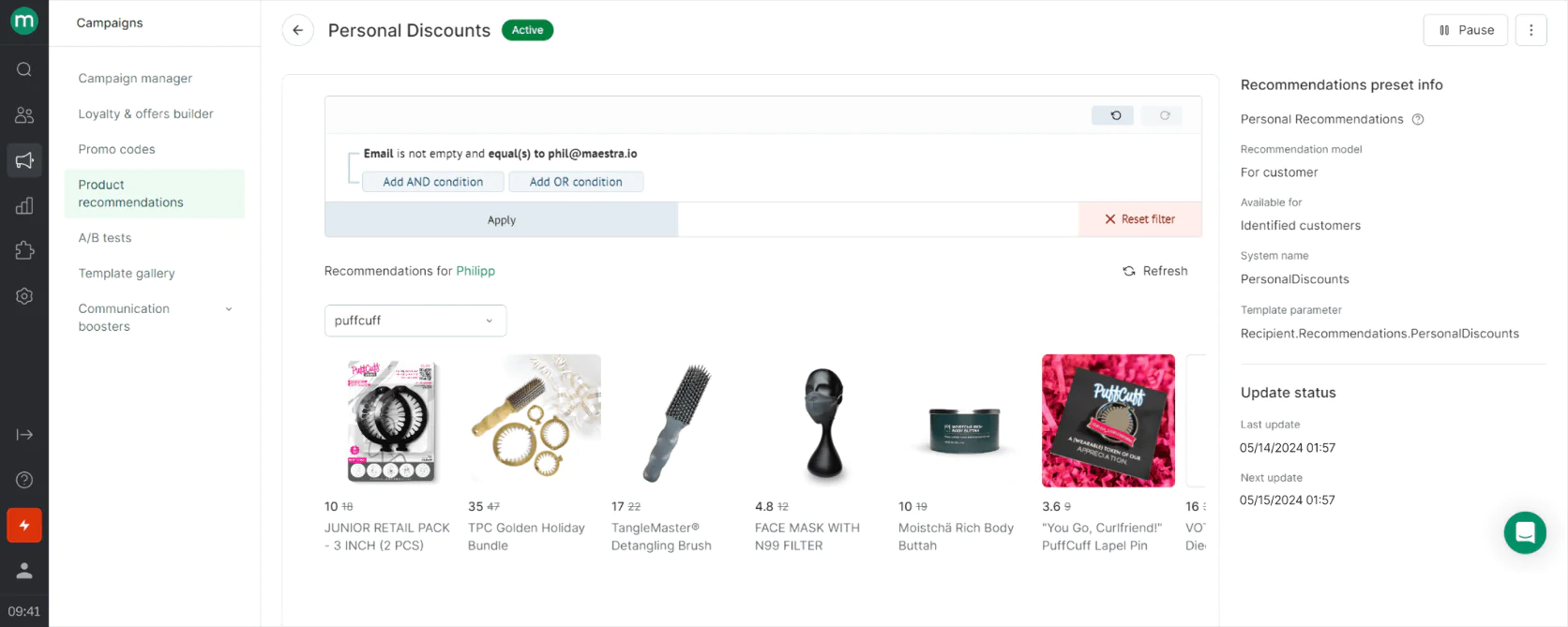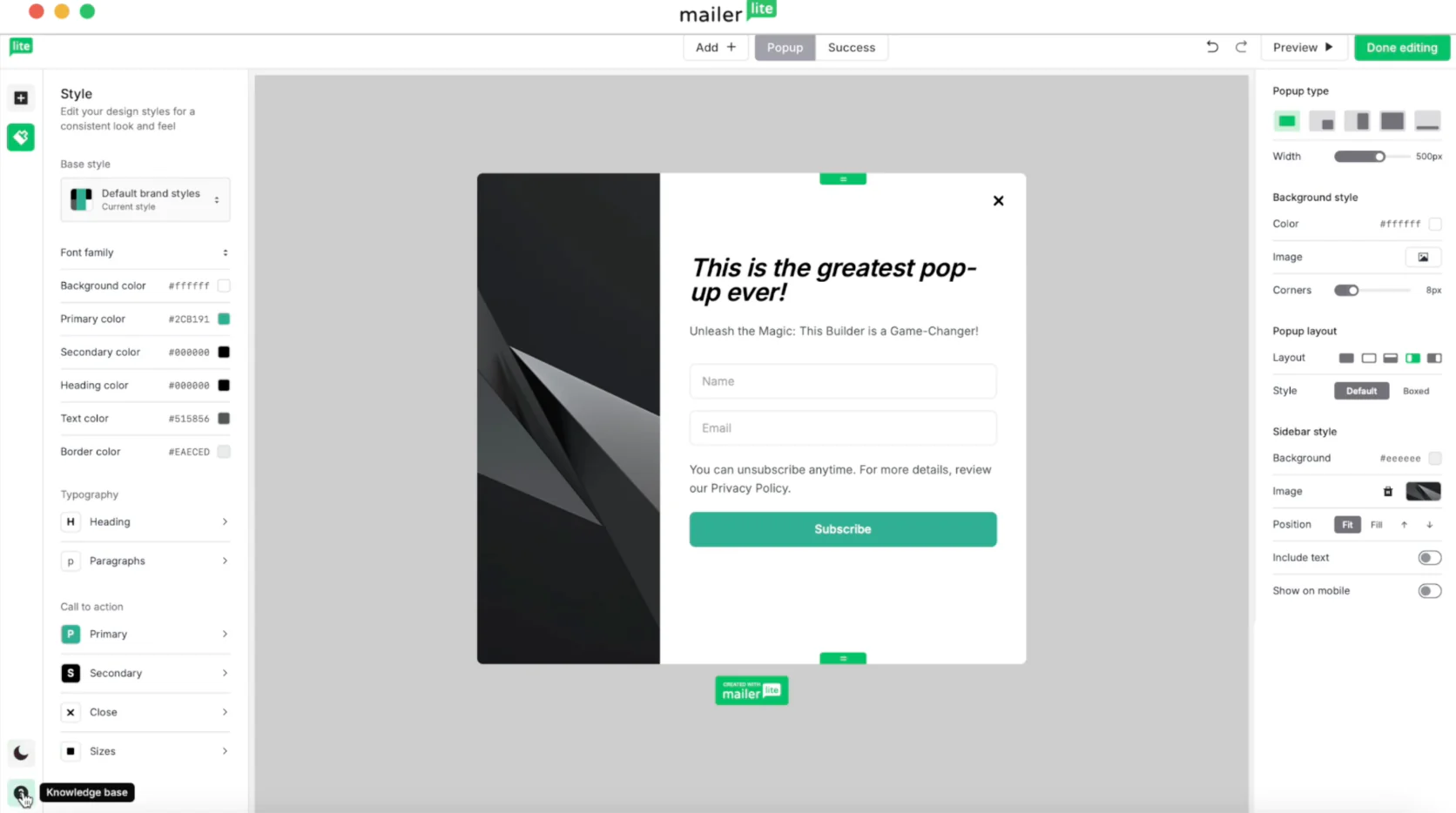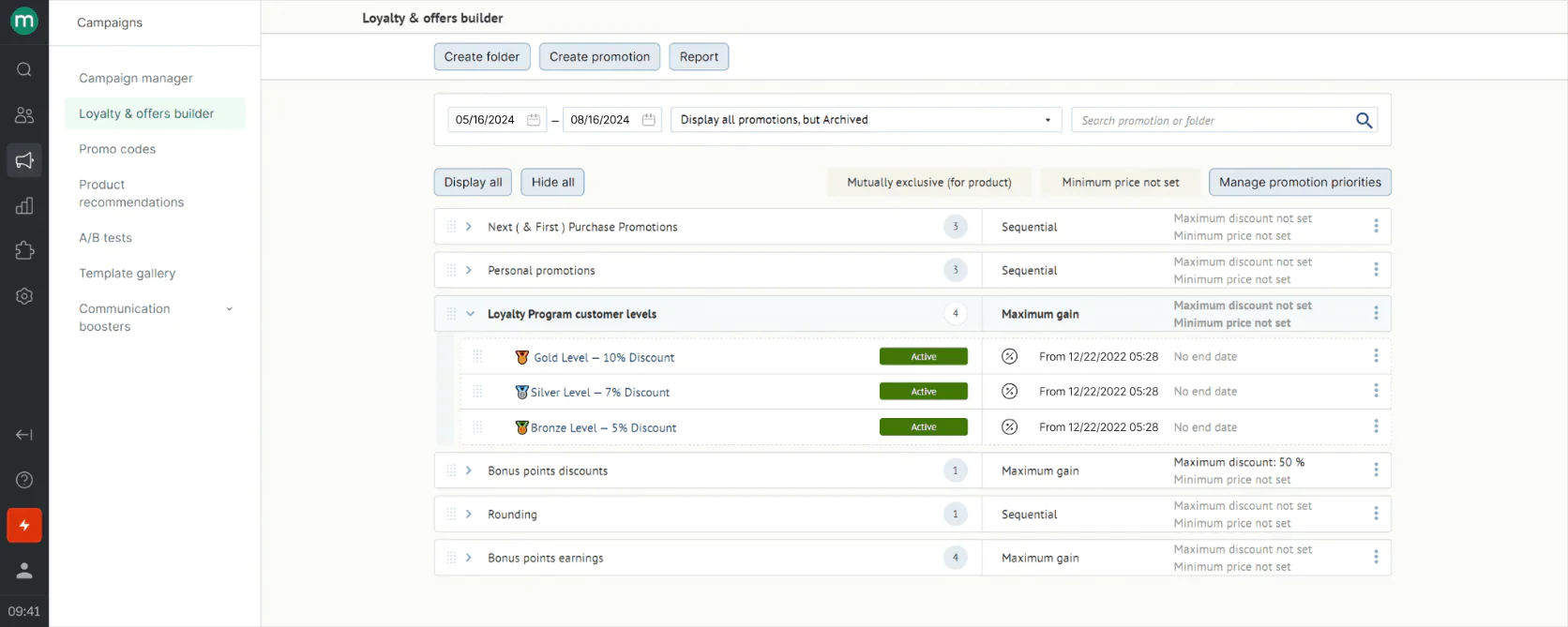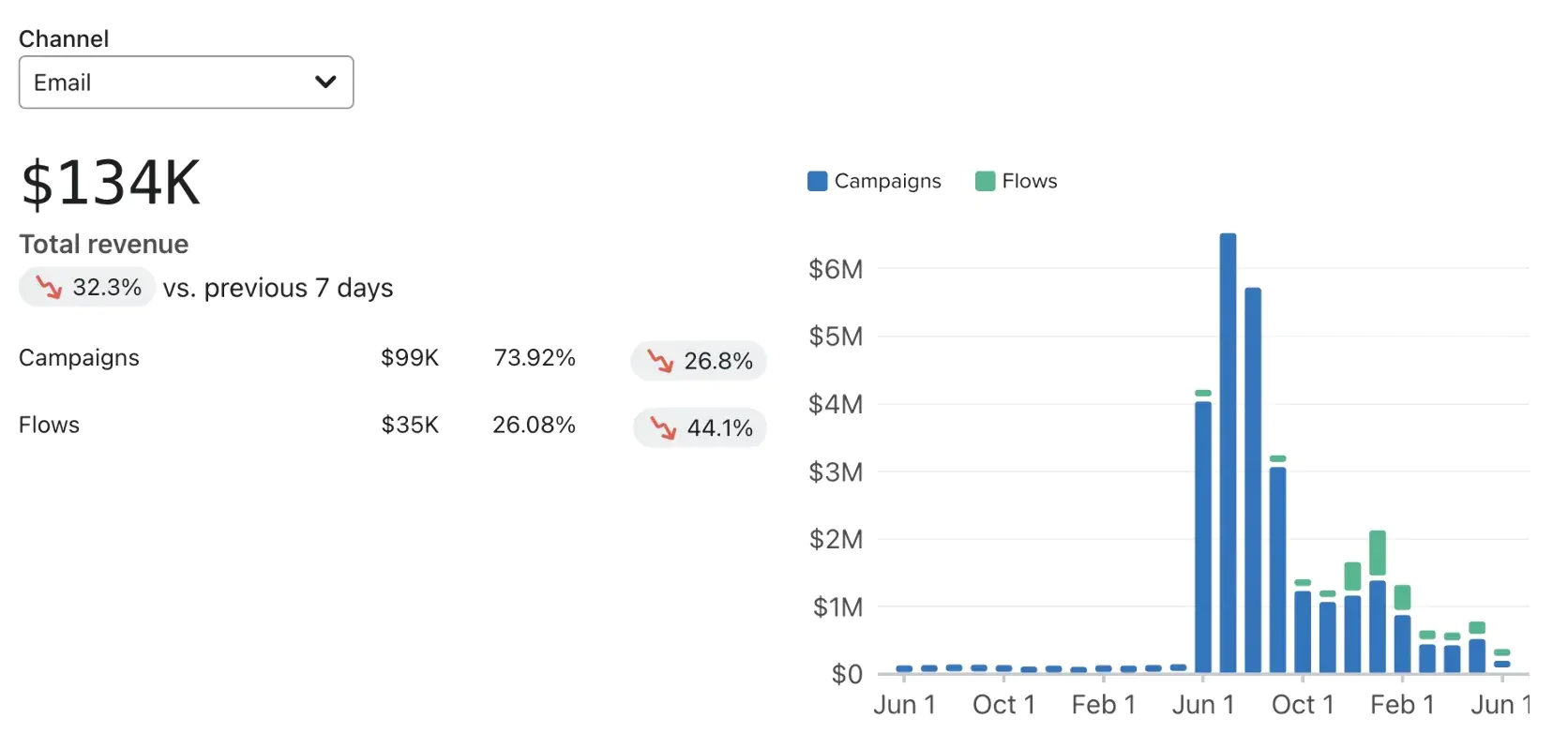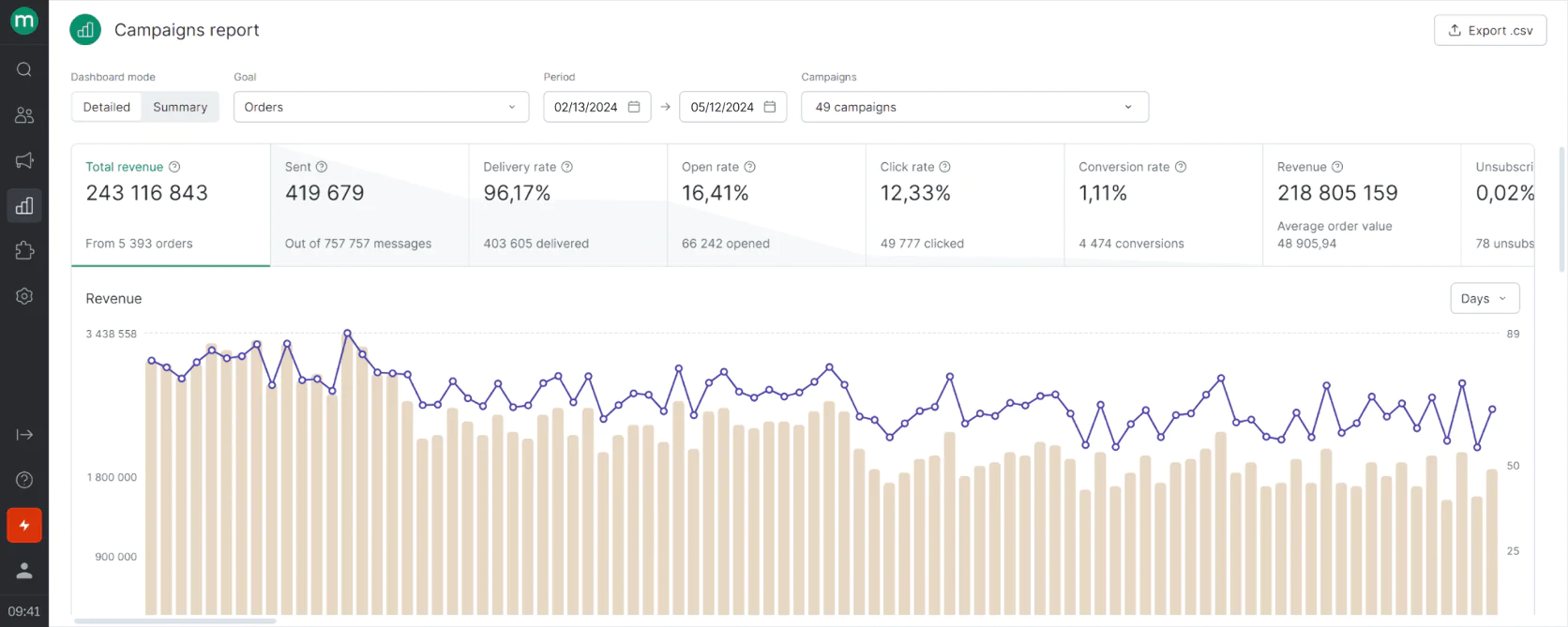Klaviyo vs MailerLite vs Maestra: Choosing Your Ideal E-commerce Marketing Platform
After extensive research and testing, we found that each platform — Klaviyo, MailerLite, and Maestra — excels in different areas, catering to specific business needs and use cases:
MailerLite — Best for: Small businesses or beginners seeking a simple, budget-friendly email marketing solution.
MailerLite’s core strength is its ease of use and affordability, allowing you to design campaigns and landing pages quickly without technical overhead. It’s an ideal starter platform if you have modest needs and want to grow your audience with newsletters, basic automations, and signup forms (there’s even a free plan for up to 1,000 subscribers). However, its functionality is limited to email-centric marketing — no built-in SMS or loyalty features, and only basic segmentation and automation triggers — so you may outgrow it as your marketing strategy becomes more sophisticated.
Klaviyo — Best for: E-commerce SMBs and DTC brands that need powerful email & SMS marketing with advanced automation and segmentation.
Klaviyo is nearly synonymous with ecommerce email marketing, offering robust tools for personalized email campaigns, text message marketing, and deep integration with platforms like Shopify. It’s the go-to for brands that want to leverage customer data (purchase history, behaviors, etc.) in their marketing – with pre-built flows for cart abandonment, welcome series, and more, plus rich segmentation options.
On the downside, Klaviyo lacks native support for things like loyalty programs or on-site personalization (you’d need third-party apps for those). Its personalization is largely within email/SMS content and audience targeting. Also, cost can escalate quickly as your contact list grows or if you send a high volume of messages – something to consider for scaling businesses.
Maestra — Best for: Mid-market and growing e-commerce brands with an established customer base and marketing team, looking for a unified platform to drive growth through hyper-personalized omnichannel promotions across all channels.
We included Maestra in this comparison because, unlike the other two, Maestra is an all-in-one marketing hub: it combines email, SMS, push notifications, loyalty programs, on-site personalization, analytics, and a real-time Customer Data Platform (CDP) into one solution. Maestra’s core is a real-time CDP that tracks customer interactions across every channel (online and offline) to power precise segmentation and personalization. Key features include:
Real-time CDP with AI-powered segmentation: All your customer data (emails, purchases, website events, etc.) lives in one place, enabling advanced, up-to-the-moment audience segmentation that other platforms can’t match.
Omnichannel marketing automation: Unified drag-and-drop flow builder for email, SMS, push, pop-ups, loyalty rewards, and even paid ads – orchestrating campaigns that react to customer behavior in real time across channels.
Integrated Loyalty & Promotions: Built-in loyalty program (points, VIP tiers, referrals) and dynamic promotion engine that works hand-in-hand with your messaging across channels (no need for a separate loyalty app).
Personalization at scale: Real-time website/app personalization, AI-driven product recommendations, and dynamic content blocks in emails/SMS – all leveraging the CDP data to tailor each customer’s experience.
White-glove support: Every Maestra client gets a dedicated Customer Success Manager and hands-on support for onboarding, strategy, and optimization (no extra charge).
With Maestra’s unified approach, you’re not juggling multiple tools or integrations – everything works seamlessly together. And with premium support included, it’s perfect for companies that want guidance and a partnership in growing their marketing.
Comparison Summary: Klaviyo vs MailerLite vs Maestra
⭐⭐
Basic email automations only. Lacks built-in support for multiple channels like SMS or push; requires external tools
⭐⭐⭐⭐
Supports email & SMS in unified flows, plus signup forms. Deep e-commerce triggers, but no native web push or loyalty, so not fully omnichannel
🏆
⭐⭐⭐⭐⭐
Truly omnichannel — unified flows across email, SMS, web/app push, in-store, ads, etc. All channels work together via a real-time CDP, ensuring cohesive campaigns on every touchpoint
⭐⭐⭐⭐
User-friendly drag-and-drop editor and templates. Great for newsletters and basic personalization with merge fields. Lacks advanced AI or dynamic content
⭐⭐⭐⭐
Powerful email platform with 100+ templates and robust automation. Allows personalization using e-commerce data. Some limitations in design flexibility vs. Maestra's custom composer
🏆
⭐⭐⭐⭐⭐
Proprietary email composer with lean code to avoid clipping. Advanced personalization using CDP data — e.g. dynamic content per segment. Supports AMP emails and high-volume sending with industry-leading deliverability optimization
⭐
No native SMS. Can only send texts via third-party integration or API
⭐⭐⭐⭐
Built-in SMS channel with dedicated dashboard. Supports automated SMS for cart reminders, promos, etc. Seamlessly ties with email flows, though no MMS or app push
🏆
⭐⭐⭐⭐⭐
Integrated SMS in omnichannel flows – texts work in tandem with emails, push, etc. Offers bulk messaging up to 250k/hour, short URLs, A/B testing, and cross-device tracking for personalized SMS at scale
⭐
No built-in web or mobile push notifications. Would require external tools
⭐⭐
Limited push capability – supports mobile push. No native web push support
🏆
⭐⭐⭐⭐⭐
Native web and mobile push notifications included. You can create targeted push campaigns for browsers and your app, with rich media, buttons, and tracking. Fully part of the omnichannel strategy
⭐⭐
Basic list management and segmentation. Stores subscriber info and campaign activity, but no full CDP – limited data unification outside email interactions
⭐⭐⭐
Robust customer profiles with e-commerce data pulled in. Good for marketing use, but not a true CDP – lacks real-time updates from all channels and advanced data modeling unless you pay for Klaviyo's separate CDP add-on
🏆
⭐⭐⭐⭐⭐
Comprehensive real-time CDP included. All customer touchpoints feed into one database. Enables up-to-the-second updates and a single source of truth for each customer, powering all channels with consistent, personalized data
Segmentation & Personalization
⭐⭐⭐
Supports segments based on signup data and engagement and basic e-commerce triggers on paid plans. Offers dynamic content in emails on higher tier. No predictive analytics or extensive behavioral criteria
⭐⭐⭐⭐
Advanced segmentation by behaviors, purchase history, demographics, etc. Includes predictive analytics like CLV and churn scores. Personalization through merge tags and product recommendations, though not as real-time or granular as Maestra's
🏆
⭐⭐⭐⭐⭐
Real-time, AI-driven segmentation. Supports nested and exclusion logic for precision. Personalizes content across email, SMS, site, and ads using those segments. Essentially, personalization is baked into every feature – from dynamic email blocks to on-site experiences – powered by the CDP
Website & Email Product Recommendations
⭐⭐
Basic product display blocks in emails using store integrations. Manual product selection with rule-based targeting by segments. No AI recommendations or website personalization capabilities.
⭐⭐⭐⭐
Built-in AI recommendation engine for emails using collaborative filtering. Shows "recommended for you" and cross-sell products in campaigns. Updates every 2-7 days, not real-time. No native website recommendation widgets.
🏆
⭐⭐⭐⭐⭐ Advanced real-time AI recommendations for both email and website. 14+ pre-built algorithms for cross-sells, upsells, and behavioral targeting. Instantly adapts to browsing behavior and excludes purchased items. No coding required for setup.
⭐⭐ Limited to static landing pages and basic pop-up forms. Same content shown to all visitors. No dynamic personalization based on visitor profile, location, or behavior without custom coding.
⭐⭐
Basic signup forms and pop-ups with behavioral triggers. Developer API allows custom personalization but requires technical resources. Not real-time for anonymous visitors and lacks marketer-friendly interface.
🏆
⭐⭐⭐⭐⭐ Comprehensive real-time site personalization with visual drag-and-drop editor. Personalizes banners, content, pop-ups, and product displays based on profile and in-session behavior. Cross-channel awareness uses data from email, SMS, and loyalty interactions. No coding required.
⭐
No loyalty program features. You can send promo codes via email, but points/rewards would require a separate app
⭐
No native loyalty module. Klaviyo integrates with loyalty apps for rewards programs, but doesn't manage loyalty or referral points itself
🏆
⭐⭐⭐⭐⭐
Built-in loyalty program with points, VIP tiers, referrals and a promotions engine. Create time-bound offers, tiered rewards, and personalize incentives based on customer behavior – all natively, with no extra apps
⭐⭐⭐
Covers standard email metrics and basic automation stats. Unique perk: visual click maps for emails/pages to see engagement "heatmaps". Lacks deeper revenue attribution or cohort analysis
⭐⭐⭐⭐
Rich reporting tailored to e-commerce: revenue per email or SMS campaign, flow performance, conversion rates, etc. Even predictive reports for lifetime value. Benchmarks available for comparison. No unified cross-channel view beyond email/SMS
🏆
⭐⭐⭐⭐⭐
Advanced omnichannel analytics dashboards. Track campaign ROI, customer lifetime value, loyalty redemption rates, and more in one place. Offers A/B test analysis, control group comparisons, and even cost-saving insights. All data can be exported in any format for further analysis
⭐⭐⭐
Dozens of integrations, including Shopify, WooCommerce, WordPress, Zapier, and others commonly used by small businesses. However, not as extensive as Klaviyo's library
🏆
⭐⭐⭐⭐⭐
Huge ecosystem: 300+ pre-built integrations covering ecommerce platforms, CRMs, reviews apps, helpdesks, and more. Easy data sync with most popular tools – a big selling point for Klaviyo
🏆
⭐⭐⭐⭐⭐
Wide range of out-of-the-box integrations for e-commerce and marketing tools. Plus, Maestra provides open APIs and will assist in building custom integrations on request — ensuring you can connect any system. Integration monitoring and support included for reliability
⭐⭐⭐⭐
Known for responsive support to even free users – 24/7 email support, and live chat available on higher plans. Extensive knowledge base and tutorials. Lacks dedicated account managers
⭐⭐⭐
Offers email support and chat for paid plans, plus a community forum and academy. Support quality is decent, but priority help is reserved for enterprise-tier clients. No dedicated success manager for SMBs
🏆
⭐⭐⭐⭐⭐
All Maestra clients get white-glove support. Dedicated Customer Success Manager assists with onboarding, strategy, and ongoing optimization. Support is fast and proactive – including regular check-ins, migration help, and even custom roadmap planning
⭐⭐⭐⭐
Freemium model: Free for up to 1k subscribers. Paid plans start at ~$10/mo for 500 subscribers, scaling up modestly with list size. Excellent value for small lists, but larger lists or advanced features require higher tiers
⭐⭐⭐
Tiered by active contacts + email sends. Costs rise significantly as you grow – e.g. ~$375/mo for 20k contacts and even more for big lists. SMS usage is charged per message. No free tier beyond 250 contacts trial. Can become expensive at scale
⭐⭐⭐⭐
Custom pricing based on number of customer profiles. Starts around $2,990/mo for up to 80k customers with all features included. Higher base cost but includes unlimited emails and all modules, plus dedicated support. Economies of scale: cost per profile drops as you grow, and you avoid paying for multiple tools. No long-term contracts or upfront fees
Micro-businesses and creators starting out with email marketing on a tight budget.
Check out MailerLite
Small-to-mid e-commerce brands that primarily want powerful email & SMS marketing integrated with their online store.
Check out Klaviyo
Mid-market and larger brands seeking an all-in-one marketing suite to personalize customer journeys across every channel.
Book a demo with Maestra
“Email marketing made simple” ✉️
MailerLite is an intuitive email marketing platform designed with simplicity in mind. It provides all the essentials to
grow your audience via email – think drag-and-drop newsletter editors, signup forms, landing pages, and basic automation workflows.
MailerLite has attracted over 1 million users (from bloggers to small startups) by focusing on a clean UI and affordable pricing. For example, MailerLite’s Free plan allows up to 1,000 subscribers and 12,000 monthly emails at no cost, giving new businesses a risk-free way to start building their list. Even the paid tiers are relatively inexpensive (the “Growing Business” plan starts at ~$15/month for 1,000 subscribers).
That said, MailerLite is not a full-fledged marketing suite. Its strength lies in straightforward email campaigns and simple automation (like a welcome series or basic drip campaigns). It does not natively support SMS messages, push notifications, or loyalty programs, and its segmentation capabilities are basic compared to Klaviyo or Maestra. You can integrate MailerLite with e-commerce platforms (like Shopify or WooCommerce) to sync purchase data, but you won’t get the kind of in-depth behavior-based targeting that a true CDP offers. In short, MailerLite is ideal for small teams that need an easy-to-use, cost-effective email marketing tool – but as you scale and require more advanced multi-channel marketing, you may need to upgrade to a more robust platform.
“Growth marketing for online businesses” 📧📱
Klaviyo is a leading customer marketing platform built primarily for e-commerce. Since its launch in 2012, Klaviyo has become the go-to solution for online retailers who want to get serious about email and SMS marketing.
At its core, Klaviyo enables you to leverage your store’s customer data to run targeted campaigns and automated flows that drive sales. It integrates deeply with platforms like Shopify and Magento — pulling in purchase history, product catalog data, website browsing events, and more — so you can create highly segmented audiences and trigger messages based on real customer behaviors (e.g. browse abandonment emails, replenishment reminders, etc.).
Klaviyo’s feature set is robust: a drag-and-drop email composer with 100+ templates, built-in A/B testing, customer segmentation, and pre-built automation flows for common scenarios like abandoned cart, welcome series, win-back campaigns, etc..
In recent years, Klaviyo has also added an SMS marketing component, allowing you to manage text campaigns in the same platform and coordinate them with your emails. (Notably, Klaviyo even supports push notifications for mobile apps now, though it does not offer web push yet.)
One reason Klaviyo is popular is its balance of power and usability. Many users find it relatively easy to get started – there’s a free tier (up to 250 contacts) to try it out, and lots of guides and community resources available.
However, Klaviyo is not an all-in-one solution. It focuses on messaging (email/SMS) and analytics around those; it does not include loyalty program functionality or product review management natively. If you need a points-based rewards system or on-site personalization beyond pop-up forms, you’ll be looking at third-party apps and integrating them with Klaviyo.
Additionally, as mentioned earlier, cost can be a drawback: Klaviyo’s pricing grows with your number of contacts and messages, and for large databases it can become as pricey as some enterprise tools.
Support for small accounts is also standard (email or chat support during business hours); only big spenders get a dedicated rep.
Despite these caveats, Klaviyo remains a top choice for mid-sized e-commerce brands because of its powerful email/SMS capabilities and e-commerce focus.
“The most unified platform for e-commerce marketing” 🔮
Maestra is an all-in-one marketing platform built for retailers and DTC brands that have outgrown piecemeal solutions.
At its heart, Maestra includes a real-time Customer Data Platform (CDP) that consolidates data from your website, online store, mobile app, in-store POS, and any other sources into a single customer profile. This unified data powers Maestra’s extensive suite of marketing tools – essentially everything you might need to engage customers across their lifecycle.
With Maestra, you get: email marketing, SMS marketing, mobile/web push notifications, on-site personalization (content and product recommendations that change per visitor), a built-in loyalty & referral program, a promotions engine for creating targeted offers, and even integration with paid ads (to sync audiences or trigger ads based on customer behavior). All of these are not separate modules, but part of one platform and one omnichannel flow builder.
The big advantage of Maestra is that it enables hyper-personalized, omnichannel campaigns that would be very difficult to orchestrate with disparate tools. For example, using Maestra’s visual Flow Builder, a marketer can design a customer journey that reacts in real time: if a customer doesn’t respond to an email, Maestra might follow up with an SMS and a personalized Facebook/Instagram ad, then perhaps a push notification – all coordinated within one workflow.
And thanks to the CDP, if that customer interacts on one channel (say, clicks the SMS and visits the site), Maestra knows and can adjust the next steps (ensuring, for instance, that the user sees their updated cart and an incentive already applied). This level of cross-channel cohesion is hard to achieve with Klaviyo or MailerLite, which largely operate in siloed channels.
Maestra is also deeply analytics-driven. It provides dashboards to track everything from campaign ROI and revenue impact to loyalty program performance and customer lifetime value. Marketers can set up control groups directly in Maestra to measure true lift.
Another differentiator is Maestra’s service model – every client, regardless of size, gets a dedicated success manager and ongoing hands-on support. This is a stark contrast to the self-serve nature of MailerLite or even Klaviyo (unless you’re enterprise level).
Of course, all these capabilities are geared toward businesses with a solid foundation (Maestra’s typical users have steady traffic and a marketing team ready to leverage an advanced tool).
In essence, Maestra is best understood as an enterprise-grade marketing stack unified into one platform, made accessible to small and mid-market brands that want to deliver personalized experiences like the big players do.
Klaviyo vs MailerLite vs Maestra: Omnichannel Automation
MailerLite’s automation is limited to email — you can set up basic workflows (like sending a series of onboarding emails) but it doesn’t natively extend beyond the inbox. There’s no SMS or push to incorporate, and no built-in decisioning based on events outside of email engagement.
Essentially, if you need omnichannel touches, MailerLite would require you to integrate with other tools (for SMS, etc.) and even then, they won't be truly unified (you might trigger an SMS via Zapier, for example, but it's not seamlessly connected to your email flow logic). This is fine for very simple use cases or early-stage marketing, but as customers interact on more channels, MailerLite can't keep up in an omnichannel sense.
Klaviyo offers more in this regard. It was built around email and later added SMS, and it allows you to combine those in the same workflow (for example, an abandoned cart flow that sends an email, then a text reminder) – giving it multi-channel automation capability. Klaviyo also integrates with Facebook Ads (syncing audiences) and recently enabled mobile push for app users.
However, Klaviyo still falls short of true "omnichannel." It lacks web push notifications, doesn't have an integrated loyalty mechanic to trigger incentive-based actions, and doesn't do on-site personalization by itself. So while you can coordinate email and SMS nicely (and maybe an ad via integration), you're still missing many channels. There's also no central brain adjusting in real time across channels – it's mostly trigger-based workflows within email/SMS.
Maestra, by design, is built for omnichannel automation. In Maestra, you don't manage your emails, texts, push notifications, and loyalty offers as separate campaigns – instead, you create seamless flows that span all channels, all within one builder.
Maestra’s flow example: abandoned card flow with emails, mobile and web pushes, pop-ups, paid ads and loyalty points
Maestra's omnichannel engine is responsive to real-time behavior, ensuring each customer gets the right next touch. This is powered by the CDP: all channels pull from the same live data, so if customer A clicks the ad and comes back, the flow knows and won't spam them with the SMS or email again (instead, maybe it moves to a thank-you or post-purchase sequence). The result is a cohesive customer experience rather than disjointed messaging.
Additionally, Maestra can handle scale and complexity in automation that would be challenging in the other tools. Some Maestra users run dozens of active flows (30, 60, even 90+ automations) that operate concurrently without performance issues – these can cover everything from cart recovery and browse abandonment to loyalty point reminders and price-drop alerts, all automated. Neither MailerLite nor Klaviyo is typically used in such a sweeping manner (many Klaviyo users stick to a handful of core flows due to complexity and cost).
In short, for true omnichannel marketing automation, Maestra is in a league of its own here.
Omnichannel Automation Winner: Maestra
It enables the kind of integrated, adaptive customer journeys that growing brands need for maximum impact. MailerLite and Klaviyo can execute email (and some SMS) automations well, but they aren't built to unify every channel in real time. Maestra is, and that's a game-changer for engagement consistency and conversion rates.
Klaviyo vs MailerLite vs Maestra: Email Marketing
MailerLite shines in the area of ease-of-use for email. Its drag-and-drop Email Editor is very intuitive, even for non-designers – you can quickly create clean newsletters with text, images, buttons, videos, etc. It includes a library of pre-designed templates (on paid plans) and an AI writing assistant to help generate content.
MailerLite’s email editor
MailerLite supports basics like A/B testing subject lines and has decent deliverability (their infrastructure is well-regarded for avoiding spam).
For personalization, MailerLite lets you insert merge fields (like the subscriber's name) and segment content by groups/tags – e.g. show a special blurb only to VIP subscribers. However, MailerLite's personalization is not very advanced beyond that; it doesn't pull in product recommendations or dynamic content based on behavior (unless you manually update your content or use custom code).
Analytics for emails in MailerLite cover opens, clicks, heatmap of clicks, and unsubscribes – enough for basic optimization.
One limitation with MailerLite is scalability of email sends. The free plan caps at 12,000 emails/month, and while paid plans remove the send limit, large volumes might require higher tiers.
Also, on the free plan, emails include the MailerLite branding footer (removed in paid plans).
Overall, MailerLite's email tool is excellent for simple campaigns and newsletters, but marketers looking for fine-grained control or very customized, dynamic emails will find it limited.
Klaviyo is a powerful email marketing platform, and this is where it truly competes head-to-head with Maestra. Klaviyo offers a robust drag-and-drop email builder as well, with more advanced options than MailerLite. You can structure emails with multiple columns, insert dynamic product blocks (e.g. "Recommended for you" items pulled from your catalog), and utilize conditional logic within emails (through "dynamic blocks" or template if-else statements) – though setting that up is a bit technical.
Klaviyo also stands out with its automation flows: you can design behavior-triggered email sequences using its Flow Builder (not as slick as Maestra's, but effective for email-centric journeys). There are many pre-built flow templates in Klaviyo (for welcome series, cart recovery, post-purchase follow-ups, etc.) which you can one-click install and then tweak. This significantly shortens the learning curve for new users.
On personalization, Klaviyo leverages the customer data it has: you can use any property (e.g. past purchase, gender, last product viewed) to personalize content or segment the send. For example, you might include a product image in an email that's actually the specific item someone left in their cart – Klaviyo can populate that dynamically if your data is integrated.
It also introduced some AI-based features like predictive analytics (predicting a customer's lifetime value, or which customers are likely to churn or purchase again), which you can use to target emails (say, a VIP loyalty campaign to high predicted LTV customers).
While Klaviyo's personalization is strong, Maestra pushes it further with real-time data and cross-channel context.
Maestra takes email marketing to the next level by combining a flexible editor with deep data integration. Maestra's proprietary Email Composer allows granular design control – you can fine-tune everything from fonts to mobile layouts – but it ensures the output HTML is clean (avoiding those Gmail clipping issues, even on image-heavy or long emails).
Maestra’s visual email composer
A standout feature is Maestra's ability to use dynamic content blocks powered by the CDP: essentially, you can design an email that will automatically populate different content for each recipient based on their profile and behavior. For instance, an email could greet a VIP customer with a Gold-tier offer and lots of imagery, while a new subscriber sees a simpler welcome message – all from one email send, no manual list splits needed.
The system can pull in product recommendations that are AI-chosen for each person, insert unique coupon codes, and even change language or entire sections of an email depending on segment. This is hyper-personalization at scale – something neither Klaviyo nor MailerLite can do natively to that degree.
Maestra also layers in advanced sending logic: it has built-in email deliverability optimization tools, like automatic warm-up for new sender domains and an "Email Health Monitor" that compares your engagement metrics to industry benchmarks to flag issues. You can send up to 500,000 emails/hour through Maestra's infrastructure, which is built to handle large campaigns without slowing down.
Maestra’s email health monitoring
Additionally, because Maestra's email is part of the omnichannel platform, you can coordinate email sends with other channels (e.g. ensure an important promo email isn't sent to someone who already redeemed the offer in-store, etc., by checking the CDP in real time).
In summary, all three platforms do email, but at different levels of sophistication. MailerLite covers the basics very well, Klaviyo offers advanced e-commerce email capabilities, and Maestra provides an unrivaled level of personalization and integration in email marketing.
Email Marketing Winner: Maestra
While Klaviyo is a close second for its robust email tools, Maestra wins due to its fully personalized, data-driven approach to email. With Maestra, every email can be uniquely tailored and timed to each customer's context (thanks to the CDP and omnichannel flows), which drives higher engagement and conversion. MailerLite is perfectly adequate for simpler needs, but not in the same league for advanced email marketing.
Klaviyo vs MailerLite vs Maestra: SMS Marketing
MailerLite does not have native SMS marketing. If you want to send text messages to your contacts through MailerLite, you'd have to use an external service or integration. For example, some MailerLite users might set up a Zapier connection such that when a certain automation is reached, a third-party SMS tool sends a text.
MailerLite does have an add-on product called MailerSend (for transactional emails/SMS), but it’s separate and geared towards developers.
In short,if SMS marketing is a priority for you, MailerLite will not cover it out-of-the-box.
Klaviyo has built-in SMS marketing capabilities that integrate alongside its email features. You can collect SMS consent via Klaviyo forms, segment users by phone number data, and send both one-off text campaigns and automated SMS as part of flows. For example, it's common to configure an abandoned cart flow that sends an email, waits a bit, then sends an SMS reminder – all within Klaviyo's flow builder.
Klaviyo's SMS supports MMS (multimedia messages) too, so you can include images or GIFs in your texts (though each MMS uses more credits). The platform provides an SMS dashboard for performance (click rates, conversion from SMS, etc.), and even allows two-way messaging.
One cool feature is that Klaviyo can convert email subscribers into SMS subscribers by inviting them (via email) to share their phone, then linking that up – thus growing your SMS list.
Limitations? Klaviyo's SMS is primarily for marketing; it doesn't natively handle things like transactional/order confirmation texts (those typically come from your ecom platform or require an API setup). Also, SMS in Klaviyo costs extra – you purchase message credits or pay per text, roughly $0.007 to $0.01 per SMS in the US – which can add up for large sends.
Overall, Klaviyo gives a strong SMS marketing experience for an email-centric platform. It's quite handy to manage SMS and email in one place, using the same segments. Many growing brands use Klaviyo for SMS instead of paying for a separate SMS-only platform.
SMS in Maestra is not an add-on but a core part of the omnichannel toolkit. This means you can craft very sophisticated SMS campaigns and automations.
With Maestra, SMS is fully integrated into the cross-channel flows – for instance, an SMS can be one touchpoint in a longer campaign that includes emails, push, etc., and Maestra will check engagement across channels. If a user clicked the email, they won't get the SMS; if they ignored email, then SMS is triggered, and so forth. This makes your text messaging feel like part of a larger conversation rather than isolated blasts.
On the feature side, Maestra supports bulk SMS campaigns (e.g. texting a promo to a segment of 50k customers) with high throughput. It provides short URL tracking so you can include links and measure clicks, and it can personalize each SMS with merge fields (e.g. "Hi John, you have 200 points expiring soon – use them now!").
Unique to Maestra, because of the CDP, you could even trigger SMS on very specific criteria – say, instantly text a customer if an item on their wishlist is back in stock. This is beyond Klaviyo's standard triggers.
Maestra also handles SMS deliverability and compliance nicely: it can automatically stagger send times to avoid carrier filtering issues if you send huge volumes, manage quiet hours, and localize sender IDs where applicable.
Another neat aspect: cross-device recognition. If a customer clicks a Maestra SMS link on their phone, Maestra can connect that to their profile activity and perhaps trigger follow-ups on other channels (like showing them related products on the website later, since it knows it was the same person who clicked the SMS).
In terms of cost, Maestra charges a low per-SMS fee (around $0.0045 in the US) which is a bit cheaper than Klaviyo's typical rates. And because Maestra's pricing includes all features, you're not paying extra for the privilege of using SMS capability (just the message fees).
SMS Marketing Winner: Maestra
MailerLite lacks SMS, Klaviyo offers a solid integrated SMS solution, and Maestra provides a more advanced SMS-as-part-of-omnichannel solution. If you just need simple text blasts, Klaviyo will do the job well. But if you want SMS to dynamically coordinate with everything else in real time, Maestra is unparalleled.
Klaviyo vs MailerLite vs Maestra: Push Notifications
MailerLite does not support web or mobile push notifications in its marketing platform. If a MailerLite user wanted to do web push, they'd have to use a separate service (like OneSignal or PushOwl) and manage it outside MailerLite.
Klaviyo: Klaviyo's support for push is limited and specific. Klaviyo introduced mobile push notifications in recent years. This is great if you do have an app – it means you can include app push messages in your Klaviyo flows (e.g. sending a push when someone adds to cart in-app but doesn't purchase).
However, Klaviyo does not support web push notifications at this time. Klaviyo's integration ecosystem might let you sync with a web push tool by sharing segments, but that wouldn't be real-time or within the same flow. It's more like you could export a list to another system that handles web push.
In summary, Klaviyo covers push only for those who have a mobile app, leaving a gap for the many e-commerce brands that don't have an app.
Maestra: Maestra offers native support for both web and mobile push notifications as a core channel. For web push, you can prompt visitors on your website to subscribe for notifications (for browsers like Chrome, Firefox, etc.), and then Maestra lets you create campaigns or automated pushes to those subscribers. For mobile push, Maestra can integrate with your mobile app (via its SDK or API) similarly to Klaviyo, but importantly, if you don’t have an app, you still benefit from web push to reach customers on their desktop or phone browsers.
Maestra’s mobile push builder
The power of Maestra's push lies in its targeting and rich content. Since it's tied to the CDP, you can send extremely specific push messages – e.g. "Price drop on an item you viewed" – to exactly the customers for whom that is true, moments after the price changes. You can include personalized elements in the push (some newer browsers support adding, say, the customer's name in the notification title).
Maestra also supports rich push notifications: you can include images, emojis, and action buttons in the notification to make them more engaging.
From a campaign perspective, Maestra's push notifications are part of the omnichannel flows. So you might have a flow that goes: email -> (if no click) push notification -> (if no response) SMS, etc.
You can A/B test pushes (different message or image) and see results in Maestra’s analytics.
Also, Maestra's system can avoid sending push notifications at times when a user is inactive or likely not available (smart send time optimization), increasing efficacy.
In short, Maestra treats push as a first-class channel, whereas MailerLite ignores it and Klaviyo only dabbles in it (mobile-only).
This matters because push can reach customers in real time even when email might sit unopened; web push in particular is a great tool for cart reminders or flash sale alerts, hitting the browser instantaneously. Maestra leveraging that channel is a notable advantage for marketers who want every edge in customer communication.
Push Notifications Winner: Maestra
There's no contest here: Maestra is the only one that truly supports push notifications out-of-the-box across web and mobile, with full integration into its marketing flows. Klaviyo's mobile push feature is useful if you have an app, but its lack of web push is a limitation. MailerLite doesn't play in this space at all. So, if push marketing is on your roadmap, Maestra provides the most capability under one roof.
Klaviyo vs MailerLite vs Maestra: Customer Data Platform (CDP)
MailerLite’s "CDP" is essentially just its subscriber database. It keeps track of subscribers and their attributes (email, name, signup date, etc.) and engagement metrics (who opened/clicked what). You can add custom fields to subscriber profiles (like "Favorite Category" if you import that) and segment based on them.
However, MailerLite does not automatically ingest data from other sources like your store's purchase history, website browsing behavior, or offline data. If you want purchase-based segments, you'd have to import that info via integration or CSV. There's no persistent event tracking beyond email events.
In short, MailerLite provides basic customer list management and segmentation, but it's not a true CDP with a unified view of multi-channel interactions. The data it handles is mostly email-centric.
Klaviyo actually comes closer to being a CDP, at least for digital commerce data. When you integrate Klaviyo with your e-commerce platform, it continuously pulls in events like "Placed Order," "Ordered Product XYZ," "Viewed Product," "Added to Cart," etc., along with customer properties like total revenue, last order date, etc. These become part of the customer’s profile in Klaviyo.
Customer profile in Klaviyo
Klaviyo also tracks email and SMS interactions (sends, opens, clicks, replies, etc.) on the profile. The result is a timeline of events for each contact that spans multiple touchpoints – mostly your website and Klaviyo channels. In that sense, Klaviyo is a lightweight CDP for many brands. You can build segments with multiple conditions (e.g. "Purchased product A but not product B, and hasn't opened emails in 30 days") because Klaviyo has that event data unified in one place.
However, Klaviyo's CDP capabilities have some limits. It doesn't automatically handle offline data or data from arbitrary sources (you can use the API to import, but it's manual). It lacks some real-time processing – segments update periodically, not second-by-second (though for most marketing uses that's fine).
So Klaviyo gives you a single customer view for online interactions to a pretty good extent. For many, that's sufficient. But it's not as real-time or flexible as Maestra's CDP, and it doesn't inherently stitch data beyond its integrations.
Maestra's CDP is a core pillar of the platform – it's a real-time, fully-featured CDP that rivals dedicated CDP products. Every piece of data – from the moment someone browses a product, to opening an email, using a coupon in-store, calling customer service, etc. – can be ingested into Maestra and tied to the unified customer profile.
Customer profile in Maestra
Maestra uses both deterministic and probabilistic matching to recognize customers across devices and channels (e.g. matching an email to a cookie or a phone number to a profile). This means even if a customer interacts anonymously (like browsing without logging in), Maestra's identity resolution might later merge that behavior with a known profile once they identify (like clicking an email or logging in).
What does this enable? In practice, it means marketers always have up-to-date, holistic data to work with. If a customer is in the store right now and makes a purchase, Maestra can update their profile in real time and potentially trigger an immediate follow-up. If they were browsing the site and added to cart on their phone, then later open an email on desktop, all those events consolidate, so you won't accidentally treat them as separate people or spam them.
Maestra's CDP also allows computed attributes and scores. For example, RFM (Recency, Frequency, Monetary) scores – many loyalty platforms boast that, but Maestra has it built-in for segmentation (you can target "High Recency & Frequency but Low Monetary" shoppers differently, etc.). It can track product affinities (which categories a customer tends to buy or browse) and use those in personalization.
RFM segmentation in Maestra
And because it’s streaming data, segments in Maestra can update in real time. You could have a segment of "Currently On Site — VIP Tier" that literally updates as people browse, and target them with a specific offer on the fly.
A concrete example: Maestra could power a use case like "if a Gold loyalty member with >$500 LTV is browsing and their cart value exceeds $100, automatically provide free shipping." This blends loyalty status, real-time behavior, and an action — something requiring unified data and instant decisioning, which is Maestra’s forte. Neither Klaviyo nor MailerLite can execute that type of thing natively (you’d need a separate personalization engine normally).
Additionally, Maestra's CDP is open – you can export data anytime, connect BI tools, etc. – and it's enterprise-scalable (it's built to handle millions of profiles and high event throughput). There's no cap on tracked events or attributes; everything is available for segmentation and personalization queries.
In short, Maestra gives you the "single source of truth" about your customers that many brands struggle to maintain when they have a patchwork of tools. By having all channels writing to one profile, Maestra eliminates data silos. This not only improves marketing targeting, but ensures that messaging is consistent (your email, SMS, site all reference the same data points – e.g., a customer's preferred store or their current points balance).
Customer Data Platform Winner: Maestra.
While Klaviyo offers strong data integration for e-commerce, Maestra's CDP is on another level – real-time, comprehensive, and actionable across channels. MailerLite isn't really in the CDP conversation at all. For any brand that wants to leverage data-driven marketing to the fullest, Maestra provides capabilities that far outstrip what Klaviyo or MailerLite can do in terms of data unity and intelligence.
Klaviyo vs MailerLite vs Maestra: Segmentation
MailerLite: Segmentation in MailerLite is relatively straightforward. You can create segments based on subscriber data (fields like signup date, location, sign-up source) and campaign activity (who clicked a particular email, opened past campaigns, etc.). For example, MailerLite can automatically group "Engaged subscribers" vs "Inactive" based on open rate or time since last open. You can also tag subscribers or put them into groups manually or via automations, then segment by those tags (like a "VIP Customers" group that you maintain).
However, because MailerLite's data scope is limited, you cannot easily segment by purchase behavior unless you import that. If you integrate an online store, MailerLite does have e-commerce segments like "Purchased product X" or "Spent over $Y" (it has some Shopify integration features on higher plans). But it's not real-time or very granular (and might require the Advanced plan or custom API use).
Segmentation is one of Klaviyo's strongest features. It provides a powerful segment builder where you can stack multiple conditions and behavior filters. For instance, you could create a segment of "Women in California who viewed the Summer collection in the last 30 days but haven't purchased in 6 months and have opened at least one of the last 5 emails."
Creating a segment in Klaviyo
Klaviyo allows combining behavioral data (site events, purchase history) with engagement data and profile properties. These segments update dynamically (not instantly, but fairly often, like within an hour typically).
Klaviyo also introduced some predictive segments: you can filter by "Predicted CLV is greater than X" or "Predicted gender is male" (their system predicts gender from first name).
They also have "segment of one" style personalization where you can use data science to find, say, each customer’s most likely next purchase category and segment on that (this is somewhat advanced use).
Klaviyo segments are not real-time to the second, but for email marketing that's rarely an issue. They are recalculated periodically and whenever you use them to send.
One slight limitation: while Klaviyo segments can be very detailed, extremely complex segments with many conditions might slow down or not update super fast, so there's some practical limits. But for 99% of use cases, it's sufficient.
Maestra: Maestra offers real-time, AI-powered segmentation and advanced personalization capabilities beyond what the others do. With Maestra, you can create segments on basically any combination of criteria imaginable – since all your data is in one place.
Maestra: user segmentation
Not only can you do everything Klaviyo can (purchase behaviors, time-based conditions, location, engagement, etc.), Maestra adds things like RFM segmentation dimensions (Recency, Frequency, Monetary scores automatically calculated) and product-based segments (e.g. "customers who purchased category X more than Y times but never category Z").
A standout in Maestra is the ability to nest segments and use exclusions with precision. For example, you could have a segment "Loyal Customers" and another "Recently At-Risk", and then create a combined segment like "Loyal but At-Risk = Loyal Customers intersect Recently At-Risk." Or exclude certain people from campaigns easily by segment logic ("All Customers EXCLUDING VIPs who purchased in last 7 days"). This nested logic is possible in Klaviyo too but can be more cumbersome; Maestra's CDP makes it straightforward.
Maestra also supports computed custom fields (aka dynamic attributes). Suppose you want to target people who usually buy full price but haven't in 90 days; Maestra could compute each profile's % of orders with a discount and let you segment by that. It's a very powerful way to slice data that typical marketing tools can't do on the fly.
In summary, Maestra provides extreme flexibility and immediacy in segmentation and personalization. Marketers can be incredibly granular or broad, and segments update immediately as data comes in.
Segmentation Winner: Maestra.
Klaviyo is a strong contender with its advanced segmentation and has helped many brands personalize better than batch-and-blast. But Maestra takes it a step further with real-time data, AI-driven insights, and personalization that extends beyond email into the website/app realm. MailerLite, while user-friendly, doesn't offer the depth of segmentation or dynamic content needed for highly personalized marketing.
If your strategy involves fine-tuned targeting and tailoring messages to each customer's behavior and profile, Maestra equips you with the best tools to do so.
Klaviyo vs MailerLite vs Maestra: Website & Email Product Recommendations
MailerLite has basic product recommendation capabilities mainly through its e-commerce integrations and dynamic content blocks. You can display product information from connected stores like Shopify in your emails, but there's no AI-driven recommendation engine.
Any product suggestions are rule-based and manual – you decide what to recommend to which segments. For example, you might create a segment of customers who bought men's clothing and manually select related men's products to show them in emails.
MailerLite supports inserting product blocks that pull images, prices, and descriptions from your store, and you can use dynamic content to show different products to different subscriber groups. However, it cannot automatically determine "customers who bought X also bought Y" or provide personalized recommendations based on browsing behavior.
On the website side, MailerLite offers no product recommendation features. Its website builder can display static product information, but there’s no capability to show personalized or dynamic product suggestions to visitors.
Klaviyo offers a built-in product recommendation engine specifically for email campaigns. It uses collaborative filtering algorithms to analyze customer purchase and browsing patterns, then suggests products each recipient is likely to buy based on similar customers' behaviors. In emails, you can insert dynamic "Product Feed" blocks that automatically populate with personalized recommendations like "Products you may also like" or "Recommended for you."
Adding product recommendations to an email in Klaviyo
However, Klaviyo's recommendation algorithm updates every 2-7 days, so it's not real-time. If someone browses new products today, their email recommendations might not reflect that behavior until the next model training cycle.
On the website, Klaviyo provides no native product recommendation widgets. While they offer an API that developers could theoretically use to build custom on-site recommendations, this requires significant technical work and isn't a turnkey solution.
Maestra provides advanced AI-powered product recommendations for both email and website that update in real-time. The platform includes 14+ pre-built recommendation algorithms covering various scenarios like cross-sells, upsells, "frequently bought together," and behavioral-based suggestions.
Maestra’s product recommendation presets
In emails, Maestra can dynamically insert personalized product recommendations that reflect each customer's latest behavior – if someone browsed items an hour before receiving an email, those interactions are immediately factored into the recommendations. The AI can exclude already-purchased items and focus on complementary products, making suggestions highly relevant.
Personal product recommendations in Maestra
On the website, Maestra offers comprehensive product recommendation widgets that can be placed anywhere – homepage carousels showing "Recommended for you," product page sections with "Customers also bought," or cart pages suggesting add-ons. These recommendations adapt in real-time as visitors browse, becoming more personalized throughout the session.
The system uses Maestra's unified CDP data, so recommendations consider not just on-site behavior but also email engagement, SMS clicks, loyalty status, and purchase history across all channels. For example, if a VIP loyalty member clicks an SMS link about shoes, the website could immediately showcase premium shoe collections when they arrive.
Maestra's recommendations are also marketer-friendly – no coding required to set up or modify recommendation blocks, and you can add manual rules to boost certain products or exclude others during promotions.
Website & Email Product Recommendations Winner: Maestra
Maestra delivers the most sophisticated and comprehensive product recommendation system, covering both email and website with real-time, AI-driven personalization. While Klaviyo offers solid email recommendations for e-commerce, it lacks on-site capabilities and real-time updates. MailerLite's basic approach works for simple product displays but falls short for true personalized recommendations.
For brands wanting Amazon-level product suggestion capabilities across all touchpoints, Maestra is the clear choice.
Klaviyo vs MailerLite vs Maestra: Site Personalization
MailerLite offers limited site personalization through its website builder and form tools. You can create landing pages and pop-ups, but these are essentially static – every visitor sees the same content. MailerLite's forms can trigger based on behavior like exit intent or time on page, but they can't personalize the message based on who's viewing.
The platform allows you to build simple websites or landing pages with its drag-and-drop editor, which is useful for campaign-specific pages. However, there’s no capability to show different content to different visitors based on their profile, location, or behavior. You might create separate landing pages for different campaigns and manually direct traffic accordingly, but MailerLite itself doesn’t automate this personalization.
Pop-ups and forms can collect subscriber information and announce promotions, but they're broadly targeted rather than personalized. MailerLite lacks features like "if visitor is from Country X, show Form Y" or "if returning customer, display a different offer" without custom coding.
Klaviyo provides very basic site personalization, mainly limited to signup forms and pop-ups for lead capture. You can create forms that trigger based on certain behaviors (time on page, scroll percentage, exit intent), but the content remains the same for all visitors.
Editing a pop-up in Klaviyo
Recent developer features allow some advanced personalization through Klaviyo's API – if you have technical resources, you can check if a visitor belongs to a certain Klaviyo segment and then use custom JavaScript to alter the site accordingly. However, this requires significant engineering effort and only works for visitors who are already known to Klaviyo (typically those who've clicked an email or previously subscribed).
This approach is not real-time for anonymous visitors and doesn't provide a marketer-friendly interface for creating personalized experiences. Any meaningful site personalization beyond basic forms requires third-party tools or custom development.
Maestra excels at comprehensive, real-time site personalization that requires no coding. Using its visual drag-and-drop editor, marketers can create dynamic content that changes for each visitor based on their profile, behavior, and real-time actions.
Maestra’s pop-up template editing
What Maestra can personalize:
Hero banners and headers that change based on visitor type (new vs. returning, location, referral source)
Promotional messages tailored to loyalty status, cart value, or browsing behavior
Pop-ups and overlays with targeted offers based on segment or in-session activity
Content blocks showing different messaging for different customer tiers
Product displays with personalized collections or categories
Interactive elements like quizzes, surveys, or games targeted to specific audiences
Real-time adaptation is a key differentiator – Maestra can change content within the same session as a visitor's behavior evolves. If someone starts browsing sale items, banners might automatically switch to sale messaging. If their cart value reaches a threshold, targeted upsell offers can appear instantly.
Cross-channel awareness means the site can reference data from other touchpoints. If a customer clicked an email about laptops earlier, the homepage might feature laptop deals when they visit. If they're a Gold loyalty member, the site could display VIP-specific content and exclusive offers.
All of this is managed through Maestra's interface without requiring developers, and changes take effect immediately for new visitors.
Site Personalization Winner: Maestra
Maestra provides true 1:1 site personalization that adapts in real-time to each visitor's profile and behavior. Unlike Klaviyo and MailerLite, which offer only basic forms and static content, Maestra enables marketers to create dynamic, personalized web experiences without coding.
Klaviyo vs MailerLite vs Maestra: Loyalty & Promotions
MailerLite does not include any built-in loyalty or rewards program features. You cannot manage points, tiers, or referral rewards through MailerLite – it's simply outside the scope of an email marketing tool. At most, MailerLite can send emails with coupon codes or special offers to your subscribers (for example, you could email a "10% off for VIP customers" code to a segment). But MailerLite itself won't track who used the code or assign any persistent rewards status.
Klaviyo also does not have a native loyalty program module. However, Klaviyo can integrate with popular loyalty apps (such as Smile.io, LoyaltyLion, etc.) – they have integration plugins so that data like point balance or VIP tier can flow into Klaviyo. This allows you to use loyalty data in Klaviyo campaigns.
When it comes to promotions, Klaviyo can generate unique discount codes (if integrated with Shopify or others) to include in emails. It tracks who used a code if you feed that data back, enabling some basic promotion analytics.
But Klaviyo isn't a promotions engine per se – it won't automatically adjust offers based on behavior, aside from what you manually set up in flows.
Maestra has a fully-fledged loyalty and promotions system built-in. This is a big differentiator. With Maestra, you can run a point-based loyalty program out of the box – customers earn points for purchases, maybe for actions like signing up or birthdays, you can set up VIP tiers (e.g. Silver, Gold, Platinum) with different perks, and referral rewards programs (give $10, get $10 type referrals). All of this is part of Maestra, meaning the data (points, tier, referral status) lives in the CDP and is instantly usable in any campaign.
Maestra's promotions engine is extremely flexible. You can create promotion rules based on time, location, customer segment, behavior, etc.. For example, you could set a rule: "If a Gold VIP hasn't purchased in 60 days, next time they visit the site or open an email, offer them a 20% off one-time code." Or "During Black Friday, if a customer's cart is over $200, automatically apply a bonus gift."
Maestra’s promotions rule engine
Because Maestra can combine or sequence promotions across channels, you could do things like gradually increase the offer if a customer isn't biting (e.g. first send 10% off, if no purchase, later send 15% off) – all automated.
It even supports reactive offers in real time: say a customer is browsing and their cart value drops (they removed an item), Maestra could trigger a pop-up or SMS offering extra loyalty points if they spend above a threshold, nudging the average order value up.
Importantly, Maestra's loyalty program works seamlessly with its messaging channels. You can include live loyalty data in emails ("You have 50 points") without custom integration, send push notifications when points are about to expire, and show on-site content based on tier (e.g. "Gold members get free shipping"). If a customer redeems points in store or online, Maestra updates their profile in real time, and any relevant automation can react (like stop sending that "use your points" reminder).
From the user standpoint, Maestra provides widgets or APIs to display loyalty information on your site or app (point balances, etc.).
Analytics are provided so you can track loyalty engagement, redemption rates, etc., similar to dedicated loyalty software.
Maestra’s Loyalty Program dashboard
Loyalty & Promotions Winner: Maestra.
Neither MailerLite nor Klaviyo include native loyalty program management – they require external tools for that. Maestra not only includes it, but does so in a way that's deeply intertwined with all your channels, enabling more creative and effective promotion strategies. If building customer lifetime value through a rewards program is your goal, Maestra is the clear choice in this comparison.
Klaviyo vs MailerLite vs Maestra: Analytics & Reporting
MailerLite provides basic analytics that cover the fundamentals of email marketing. For each email campaign, you can see open rate, click rate, bounce rate, unsubscribe count, and so on. It presents these in a simple dashboard and even offers a click-map overlay to see where people clicked within your email (a nice visual touch).
You can export reports or integrate with Google Analytics by appending UTM tracking to links (so you see conversions in GA). For automation workflows, MailerLite shows how many people entered, completed, etc., and for forms/landing pages, it shows views and conversion rates.
However, MailerLite's reporting is not very deep on revenue. If you have e-commerce integration, it might show total sales from a campaign (by tracking who clicked and purchased, if set up), but it lacks robust attribution modeling. It also doesn't compare segments or do cohort analysis.
Essentially, MailerLite gives you surface-level metrics to gauge engagement and maybe some outcome (like clicks leading to sales), but you might need external tools or manual analysis for serious business KPIs.
There's also no dashboard that aggregates across campaigns (aside from maybe calculating average open rates or subscriber growth over time). It's more campaign-by-campaign. For small operations, this is usually fine.
Klaviyo has richer analytics, especially geared towards e-commerce outcomes. In Klaviyo's dashboards, you can see overall metrics like total revenue attributed to Klaviyo (and what percentage of your store's revenue that is), number of orders from Klaviyo emails, etc.
Fragment of Klaviyo’s business review dashboard
Each campaign and flow in Klaviyo will show attributed revenue – Klaviyo uses a standard attribution window (by default, if someone clicks an email and purchases within 5 days or views and purchases within 1 day, it counts it). This helps you quantify the ROI of your emails and SMS.
Klaviyo also has some preset analytics reports: for example, it has an email performance dashboard where you can compare open/click rates over time, deliverability reports (spam complaint rates, etc.), and segmentation of engagement (who are your most engaged subscribers, etc.). If you're using predictive analytics, you have reports like "Predicted CLV distribution" across your customer base.
One useful feature: Klaviyo Benchmarks. It will compare your key metrics (open rate, click rate, revenue per recipient, etc.) with industry benchmarks (based on Klaviyo's vast user data) to show if you're above or below average for similar companies. This can be insightful to know where to improve.
For A/B tests in flows or campaigns, Klaviyo will show which variant won on what metric (opens/clicks or revenue) and can auto-pick the winner for a campaign send.
Where Klaviyo might fall short is cross-channel or customer-centric analytics. It is mostly focused on how emails and texts perform. It doesn't inherently do things like multi-touch attribution (crediting multiple channels) or give you insights on things like "customer journey analysis" beyond the flows you set up.
And if you wanted to analyze, say, retention rates or lifecycle stages, you might export data to do that offline or use their new CDP analytics (which, again, is an add-on).
Still, for the scope of an email/SMS platform, Klaviyo's reporting is quite robust and likely sufficient for most marketing teams to gauge and improve their campaigns. Many users praise seeing directly how much money each email brought in – that ties marketing to revenue nicely.
Maestra: Maestra delivers advanced analytics across the entire customer journey. Because Maestra covers so many channels, its analytics aren’t siloed by channel; you get a holistic view. Maestra provides multiple dashboards, for example: an Email Dashboard (similar to Klaviyo’s, with opens, clicks, deliverability, and industry benchmark comparisons), an SMS Dashboard, a Push Notification performance view, etc.
One key aspect: Maestra tracks business-centric metrics. You can set up business goals or KPIs in Maestra (like increase repeat purchase rate, or maintain a certain revenue per customer) and monitor how your campaigns influence those.
Maestra’s loyalty reports, for instance, will show how the loyalty program is impacting sales (point redemptions, engagement, etc.). Similarly, its promotional analytics can tell you the cost of discounts given versus the additional revenue generated, helping optimize promotion strategies.
Maestra excels at cohort and segment analysis. You can easily compare segments over time — e.g. how did last month’s first-time buyers perform in terms of repeat purchase when exposed to certain flows, versus those not in flows (since Maestra can have control groups in campaigns). This is venturing into marketing science territory, but it’s incredibly useful for optimizing strategies (knowing if your win-back flow actually increases retention compared to no flow, for example, via holdout groups that Maestra can maintain).
Moreover, all data in Maestra can be exported or pushed to BI tools, so if you want to do custom analytics beyond its UI, you can. But out-of-the-box, it’s providing a level of analysis that typically only more enterprise analytics suites would, like seeing discount spend vs revenue or campaign incremental lift through control groups.
Analytics & Reporting Winner: Maestra.
While Klaviyo offers very good email/SMS reports, Maestra offers a broader and deeper analytical toolkit, spanning all channels and tying results to business outcomes (growth, retention, ROI). It emphasizes not just open or click rates, but how your marketing is moving the needle on sales and customer lifetime value, and it does so with sophistication (control groups, predictive insights, etc.). MailerLite’s basic stats are fine for small scale, but as you grow, those numbers alone won’t answer bigger questions — something Maestra is built to tackle.
Klaviyo vs MailerLite vs Maestra: Integrations
MailerLite offers a decent range of integrations, primarily focusing on popular web and e-commerce tools that small businesses use. For example, MailerLite has native integrations for Shopify, WooCommerce, WordPress, Zapier, Stripe, PayPal, Squarespace, etc.. These allow you to connect sign-up forms to your site, sync customers and their purchase data from a store, or embed MailerLite forms easily on your CMS. MailerLite also has an API, so developers can build custom integrations or use it to push/pull subscriber data.
In terms of numbers, MailerLite lists about +50 direct integrations on their site (including niche ones). It’s not as extensive as Klaviyo’s network. Some integrations may require the Advanced plan (for example, certain advanced ecommerce features might not be on the free tier).
One thing to note: because MailerLite isn’t an all-in-one, you might find yourself integrating multiple tools — one for pop-ups, one for loyalty, etc., each with MailerLite — which can be a bit of a juggling act. But for core needs, it covers the major bases.
Klaviyo is well-known for its extensive integration ecosystem. They have pre-built integrations with over 300 apps. Key integrations include all major e-commerce platforms (Shopify, BigCommerce, Magento, WooCommerce, Salesforce Commerce Cloud, etc.), payment systems, review apps (like Yotpo, Okendo), loyalty programs (Smile.io, LoyaltyLion), customer support (Zendesk, Gorgias), subscription billing (Recharge), referral programs, analytics dashboards, ad platforms (Facebook Custom Audiences integration), and many more.
Essentially, if an app is commonly used by e-commerce or marketing teams, Klaviyo likely has a connector.
These integrations are typically easy to set up — often one-click or guided — and they bring data into Klaviyo (and sometimes push data out). For example, the Shopify integration not only imports customers and orders, it can also sync back to Shopify to update customer properties or trigger certain Shopify flows from Klaviyo. The Facebook integration can auto-sync segments to Facebook Ads for retargeting.
Also, Klaviyo’s API is robust for custom needs (some larger brands use it to feed in offline sales, etc., if needed).
Thus, Klaviyo plays fairly nicely with an existing stack — it’s rare to find a tool in the e-com marketing realm that Klaviyo can’t integrate with either directly or via Zapier.
Maestra provides ready-to-use integrations with the major e-commerce platforms (Shopify, Magento, BigCommerce, WooCommerce, etc.), as well as with advertising channels (Facebook/Instagram Ads, Google Ads for audience sync), analytics tools (Google Analytics, etc.), and other marketing tools like review platforms or helpdesks.
The difference is, Maestra often aims to replace many point solutions (like email, SMS, loyalty) so you may end up needing fewer integrations overall.
That said, Maestra knows every business has some unique pieces, so they offer flexible APIs and even will build custom integrations on request for clients. In fact, with Maestra’s white-glove approach, if you have an internal database or a niche software you need to connect, Maestra’s team can assist in connecting it via API or webhook. This is a level of support that’s beyond what Klaviyo or MailerLite would typically do — they usually leave custom integrations to the client or third-party developers.
One additional integration aspect: Maestra can act as a source to others. For instance, if you want to send Maestra’s segment data to another tool or export audiences to ad platforms, it can do that (so it can feed others via API, essentially treating Maestra as the primary record).
In general, if an integration is critical and not already available, Maestra is willing to make it happen through their Customer Success services, which is a big plus for companies with unique requirements.
Integrations Winner: Tie between Klaviyo & Maestra.
Here’s why: Klaviyo wins on sheer number of plug-and-play integrations (300 and counting) and ease of connecting common apps — it’s very much an ecosystem player. Maestra, on the other hand, ensures that whatever integration you need, you can have — either through existing connectors or custom-built by their team. It also simplifies your stack by consolidating features, meaning fewer integrations needed overall.
MailerLite is a bit behind, with a smaller integration library and reliance on third-party connectors for many things. It covers the basics but might not have direct integrations for more specialized tools.
Klaviyo vs MailerLite vs Maestra: Customer Support
MailerLite: MailerLite is known for its friendly and accessible support, especially considering many of its users are on free or low-cost plans. They offer 24/7 email support for all plans — including free (at least for the first 30 days free, then email support ongoing). On paid plans, you get faster response times, and on the Advanced plan, you also get 24/7 live chat support guaranteed.
In practice, MailerLite’s support team has a good reputation for being helpful with troubleshooting, and their replies are usually prompt (often within an hour or two via chat, and same-day via email).
They also provide a rich knowledge base, video tutorials, and even an active Facebook community where users help each other. Since MailerLite markets itself on simplicity, many users might not need too much hand-holding, but it’s reassuring that help is there around the clock if needed.
What you won’t get with MailerLite is a dedicated account manager or strategic consulting — that’s outside the scope at their price point. Support is more about answering questions or solving problems, not proactively training you or optimizing your strategy.
Klaviyo’s support has improved over the years, but it varies by account tier. For small accounts (especially on the free plan), support is via email only, and they promise a certain SLA (usually within 24 hours response, often faster). As you move to higher pricing tiers, Klaviyo opens up live chat support during business hours and eventually some level of phone or a dedicated rep for very large enterprise clients. They also have a large community forum and help center articles.
Klaviyo’s philosophy has been somewhat self-service oriented — they provide a lot of documentation and an academy of courses, expecting users to learn the platform (which many do, since there’s a big ecosystem of Klaviyo experts and agencies too). If you’re an SMB on Klaviyo, you generally will not have a personal point of contact inside the company. However, they do host webinars and offer some group sessions for onboarding new users.
For bigger customers (I think those spending over a certain threshold, or on their enterprise “Klaviyo One” plan), Klaviyo offers customer success managers and solution architects to assist with account setup, integration, and strategy. But this is the exception, not the norm for their customer base. Many mid-sized users rely on Klaviyo’s support for technical questions and maybe hire consultants for strategy.
It’s worth noting, Klaviyo’s support can sometimes be slower during peak times (like BFCM) because a lot of customers might be asking things. And some users have noted that first-tier support might give boilerplate answers, but if you push or have a complex issue, they do escalate to technical specialists who are quite knowledgeable.
Maestra offers white-glove, end-to-end support for all clients. This starts from the sales/onboarding process — when you sign up with Maestra, you’re assigned a Dedicated Customer Success Manager (CSM) who becomes your point person.
This CSM helps with everything: planning the migration from your old tools, training your team on using Maestra, setting up your initial campaigns and automations, and even co-creating a marketing roadmap aligned with your goals. They will often schedule weekly or bi-weekly check-in calls to discuss performance, share recommendations (like “Hey, we noticed your open rates on winback emails are low, let’s tweak the subject lines” or “Let’s try a new loyalty promotion this quarter”), essentially acting like an extension of your marketing team.
When it comes to technical support, Maestra offers 24/7 live chat with very fast response (under 5 minute), and of course email support as well. Because each customer has a dedicated CSM, they are familiar with your integration specifics, so if any issue arises, it’s resolved quickly. If something urgent happens (say an automation misfired or you have a question right before a big campaign), Maestra’s team is on it immediately.
Additionally, Maestra provides ongoing deliverability monitoring (helping ensure your emails land in inboxes), and if you want to implement something new (like a complex segmentation strategy or integration), you can rely on their team to assist rather than figuring it out alone. This level of support is rarely available without extra cost in other platforms (for example, Klaviyo might charge for consulting hours or such).
Clients often remark that Maestra feels like having an agency or consultant alongside the software, rather than just a software vendor. That can be incredibly valuable for companies that want to accelerate growth and learn best practices (the CSMs have seen many use cases and can advise proactively).
Customer Support Winner: Maestra
It’s clear that Maestra offers the most comprehensive and hands-on support experience — every Maestra client, regardless of size, gets a dedicated success manager and essentially concierge service. This ensures you’re never left struggling with the platform or unsure how to improve results.
MailerLite actually deserves kudos for making support available even to free users (that’s rare), and their responsiveness is great for the price. Klaviyo’s support is solid for technical questions and they have lots of resources, but unless you’re a big enterprise client, you won’t get the personal, strategic guidance that Maestra provides (and some SMBs do feel a bit on their own with Klaviyo, or end up hiring outside experts).
Klaviyo vs MailerLite vs Maestra: Pricing
MailerLite is the most budget-friendly of the three.
It has a Free plan for up to 1,000 subscribers and 12,000 emails per month. This is generous and great for small lists — though the free plan has some feature limitations (MailerLite branding on emails, no templates, single automation trigger, etc.). Once you exceed 1,000 subscribers or need advanced features, you move to paid.
The Growing Business plan starts around $10/month for 500 subscribers (or ~$15 for 1,000) and increases as your list grows (e.g. ~$30 for 2,500 subs, ~$50 for 5,000 subs). These paid plans include unlimited emails and core features.
The Advanced plan costs roughly double the Growing plan at each tier (e.g. $30 vs $15 at 1k subs), and unlocks all features like Facebook integration, multiple automation triggers, promotion pop-ups, and live chat support.
Even at, say, 50k subscribers, MailerLite Advanced is about $340/month, which is significantly cheaper than Klaviyo or Maestra at that list size. And MailerLite doesn’t charge extra for additional features — it’s mostly subscriber-count based (with some sending limits on free).
So MailerLite is excellent value for purely email-centric marketing on a small-to-medium scale. You can manage tens of thousands of contacts for a few hundred dollars a month. The trade-off is you are not getting those more advanced capabilities, but if you don’t need them, why pay more?
Klaviyo’s pricing is more premium and scales with your usage of email and SMS.
For email, Klaviyo has a free tier up to 250 contacts / 500 emails (mostly for trial, very limited). After that, it starts at $20/month for ~500 contacts. At 1,000 contacts, it’s around $30; 5,000 contacts ~$100; 10,000 contacts ~$150, 50,000 contacts ~$700, etc. It increases roughly linearly with list size, with price per contact slightly decreasing at large scales.
However, in early 2025 Klaviyo changed to count all active profiles (not just subscribed emails) and cap email sends to 10x list size — meaning you can’t just email a small segment and not pay for the rest; if they’re active profiles, they count.
On top of email pricing, SMS is separate. Klaviyo offers an Email+SMS bundle where, for example, 1250 SMS credits adds $15 on top of your email plan. For larger volumes, they have tier packages (like $60 for 10k SMS credits, etc.). SMS can become expensive because each message costs credits (~0.7 cents per SMS in US). So if you send a lot of texts, it’s a notable add-on cost.
Klaviyo also has add-ons: Email sending above 10x list costs extra (if you email very frequently to a large list). And new features like Reviews or their CDP analytics are add-ons (for example, Reviews cost based on orders, CDP analytics starting $500/mo for up to 100k profiles).
In summary, a brand with 20k contacts might pay around $375/mo for email, plus any SMS usage. At 50k contacts, ~$720/mo email. At 100k, ~$1380/mo email. These can quickly outpace MailerLite’s costs by an order of magnitude.
Why pay more? Because Klaviyo generally drives more revenue with its advanced capabilities — brands often justify its cost by the sales lift it provides. But one complaint is that Klaviyo gets very costly as you scale — you might cross the $+1000/mo mark just as a mid-sized business, and at that point, the ROI needs to be carefully assessed.
Maestra Pricing: Maestra’s pricing model is quite different — it’s typically based on the number of customer profiles (CDP profiles) you manage, and it’s a higher flat fee that includes all functionalities. Maestra starts around $2,990/month for up to 80,000 customer profiles. All essential features are included at every tier — email, SMS (though SMS messages are charged per send at a low rate), loyalty, push, etc., plus the dedicated support.
Cost per profile is lower as you grow — meaning Maestra becomes more cost-efficient for larger databases compared to, say, Klaviyo which continues linearly. Moreover, Maestra doesn’t nickel-and-dime on extra modules; you get everything from day one. So a midmarket brand might pay, say, $2k-$4k per month for Maestra depending on size.
Yes, that’s a big jump from MailerLite’s $50 or Klaviyo’s $1300 — but you might be able to replace multiple tools (email platform, SMS service, a loyalty platform, a personalization engine, etc.) with Maestra, and get better results, and save on headcount/agency costs due to their support.
Maestra also doesn’t lock into long-term contracts necessarily. There are no upfront implementation fees, and you can cancel anytime (though obviously they hope you stay).
For SMS sending via Maestra, they charge a very low rate, which is actually about half of Klaviyo’s rate. That can save money if you send a lot of texts.
Paying ~$24k/year for Maestra (at entry tier) could actually be similar to Klaviyo’s cost at say 80k profiles, but Maestra includes everything and then some. Above that, Maestra boosts your revenue far beyond the cost difference (which is their goal through better personalization, etc.), it’s worth it.
One more point: Maestra’s pricing includes the white-glove service. With Klaviyo or MailerLite, if you want dedicated strategic help, you’d likely hire an agency or consultant which is an additional expense outside the platform cost. Maestra bundles that help in.
In conclusion, MailerLite is best for budget-conscious small businesses, Klaviyo is a justifiable spend for SMBs aiming to grow with strong email/SMS marketing, and Maestra is an investment for those aiming to truly optimize omnichannel customer engagement and willing to spend to make more. Many brands find that as they scale, point solutions like MailerLite or even Klaviyo become limiting or expensive in aggregate (with add-ons), which is when Maestra’s all-in-one pricing and value make a lot of sense.
Klaviyo vs MailerLite vs Maestra: Pros & Cons
✅ Deep e-commerce integration and data
Pulls in rich customer and order data (products, revenue) for segmentation and automation. Great for Shopify and similar platforms.
❌ Costs escalate with growth
Pricing increases steeply as contact list grows; can become expensive for large databases (e.g. ~$720/mo at 50k contacts). Also charges separately for SMS usage.
✅ Powerful email & SMS automation
Pre-built flows (cart recovery, welcome, etc.) and advanced segmentation allow sophisticated targeted campaigns.
❌ No native loyalty or reviews
Requires separate apps for loyalty programs, product reviews, etc., and relies on integrations to use those data.
✅ Large template library & intuitive editor
100 email templates and an easy drag-and-drop builder make designing campaigns efficient.
❌ Limited on-site personalization
Focuses on messaging (email/SMS); lacks built-in web personalization or dynamic content on site beyond basic forms.
✅ Robust analytics and attribution
Shows revenue per campaign/flow, customer lifetime value predictions, and benchmarks to gauge performance.
❌ Standard support for SMBs
Unless you’re enterprise-level, support is mainly email/chat and self-serve resources. No dedicated CSM for most customers, which can limit strategic guidance.
✅ Extensive integrations
300 pre-built integrations with popular apps (reviews, loyalty, support, ads, etc.) to extend functionality
❌ Potential complexity for newbies
The array of features and options can be overwhelming for very small teams or beginners without prior email marketing experience (though many learn it fine).
✅ Very affordable pricing
Generous free tier (up to 1k subs) and low cost paid plans. Ideal for small budgets, delivering great value per dollar.
❌ Limited multi-channel capability
Email-focused platform. No native SMS or push notifications, and minimal social/ad integration. Lacks true omnichannel marketing features.
✅ User-friendly interface
Clean, simple UI and drag-and-drop editors for emails, landing pages, forms. Little technical skill required — great for beginners.
❌ No loyalty or advanced CRM features
Cannot run loyalty/rewards programs, and only basic e-commerce data use. Not suited for complex customer lifecycle marketing beyond email.
✅ Built-in landing pages & sites
Create landing pages and even simple websites within MailerLite, no extra CMS needed. Useful for lead gen or campaigns.
❌ Basic automation
Automations allow single-trigger workflows but not multi-branch sophisticated logic (unless on highest plan). May fall short for complex nurturing sequences.
✅ Good support for the price
24/7 email support even on free, and live chat on higher plans. Highly rated customer service responsiveness in its class.
❌ Scaling limitations
Designed for small to mid lists. It can technically handle large lists, but features and analytics don’t scale in depth. Fast-growing brands may outgrow its capabilities (lack of advanced segmentation, limited analytics).
✅ AI and template features
Offers an AI writing assistant and a library of templates to speed up email content creation, plus an intuitive visual heatmap for email clicks.
❌ Fewer integrations
Has key integrations, but the ecosystem isn’t as extensive as Klaviyo’s. Some less common tools might require Zapier or custom work to connect.
✅ Unified all-in-one platform
Combines email, SMS, push, loyalty, personalization, analytics in one tool, eliminating the need for multiple separate apps. Streamlines your martech stack.
❌ Limited reviews and UGC features
Does not include product reviews/UGC management module (focuses on promotions/loyalty). Integrates with review platforms, but doesn’t collect reviews itself.
✅ Real-time CDP & segmentation
Built-in Customer Data Platform unifies online/offline data with instant segmentation for hyper-personalized targeting.
❌ No free plan
Base cost (~$1,990/mo for up to 80k profiles) is a significant investment. Not cost-effective for very small businesses.
✅ Omnichannel automation
Orchestrates seamless campaigns across email, SMS, web, app, ads, etc., reacting to customer behavior in real time. Drives higher engagement through channel synergy.
✅ Integrated loyalty & promotions
Natively supports points, VIP tiers, referrals, and advanced promotional rules across channels. Enhances retention marketing without extra software.
✅ Full-service support included
End-to-end white-glove support for all clients: dedicated success manager, onboarding help, strategy advice, and fast 24/7 issue resolution. (No extra cost for support.)
✅ Advanced analytics & optimization
Comprehensive reporting on campaign results, customer LTV, cohort analysis, and automated A/B testing against control groups. Allows continual improvement with data-driven insights.
Final Verdict: Klaviyo vs MailerLite vs Maestra
Klaviyo — Best for: Established e-commerce brands (typically SMBs) that want powerful email and SMS marketing with deep e-com integration, and are willing to invest a bit more for better automation and segmentation than entry-level tools provide.
It’s ideal if you’re on Shopify or similar and need to step up from basic newsletters to targeted, revenue-driven campaigns. Klaviyo really shines in the $1M–$50M annual revenue range where personalized email/SMS can significantly boost growth. Keep in mind the costs will grow as your list grows, so you’ll want to continuously optimize and monetize your audience to justify the spend. If you plan to add loyalty or on-site personalization, you’ll be using add-ons alongside Klaviyo.
MailerLite — Best for: Entrepreneurs, creators, and small businesses at an early stage of marketing maturity, or those with simple needs and tight budgets.
If your priority is to send out newsletters, basic promotional emails, and perhaps some simple automation without complex triggers — and do it at rock-bottom cost — MailerLite is the perfect fit. It’s also great for content-driven folks (bloggers, authors) who want integrated landing pages and email in one tool. As long as you don’t require advanced multi-channel campaigns or sophisticated data usage, MailerLite will serve you well for a long time at very low expense. Essentially, use MailerLite if you need an easy, effective email tool and nothing more.
Maestra — Best for: Growing mid-market companies and ambitious marketing teams that have outgrown point solutions and want to deliver Amazon-level personalization and omnichannel experiences.
If you’re at a stage where managing 5 different tools (ESP, SMS platform, loyalty app, etc.) is hindering performance and data consistency, Maestra will consolidate and supercharge your efforts. It’s ideal for brands with an established customer base (tens of thousands of customers and up) and an in-house team ready to leverage advanced capabilities with Maestra’s guidance.
Maestra’s all-in-one approach, while a larger investment, is perfect for those looking to scale efficiently, maximize customer lifetime value, and gain a competitive edge through personalization. If you’re serious about the customer journey and want to orchestrate it seamlessly across email, SMS, site, app, and more — with all your data in sync — Maestra is the platform to take you to that level.
Use MailerLite if: You want an affordable, simple email solution to stay in touch with your audience and automate a few basic journeys, and you’re not currently in need of multi-channel bells and whistles. It’s perfect for early-stage marketing or non-complex use cases where ease and low cost trump advanced features.
Use Klaviyo if: You need to drive revenue through smarter email and SMS marketing and you have an e-commerce focus. You’re ready to move beyond “one-size-fits-all” emails to segmented, behavior-driven campaigns. Klaviyo will help unlock that next layer of growth, especially if you pair it with the right strategy. Just watch the cost as you scale and be prepared to invest time into learning and optimizing the platform for maximum ROI.
Use Maestra if: You want a unified martech stack that does it all – and you want a partner in your success. If your vision is to deliver personalized, cohesive customer experiences across every channel (email, SMS, push, in-store, ads) and you recognize that having a single platform and single customer view is the way to do that, Maestra is for you. It’s particularly suited for retailers and DTC brands at the mid-market level who are looking to emulate enterprise marketing sophistication without cobbling together dozens of tools. With Maestra, you get enterprise-grade capabilities plus the hands-on support to execute them, which is ideal for a lean team aiming high.
Finally, consider your future needs as well as current. Many brands start with MailerLite for its simplicity, graduate to Klaviyo as they grow and need more power, and then eventually move to a platform like Maestra when they need that all-encompassing solution to break silos and accelerate even faster. There’s no one-size-fits-all answer — it’s about the right tool for the right stage of your journey.
Next Steps: Evaluate where your business stands in terms of marketing sophistication and growth trajectory. If you’re just beginning or have basic requirements,
MailerLite will cover you without breaking the bank. If you’re experiencing solid growth and want to double down on email/SMS-driven revenue,
Klaviyo is a proven choice to boost your lifecycle marketing. And if you find yourself juggling multiple systems or craving a more unified, data-driven approach, it’s probably time to
consider Maestra — you can click here to get started with Maestra
and
schedule a demo with our team to see how it fits your specific needs.
Whichever you choose, make sure it aligns with your goals and resources. Here’s to finding the perfect marketing platform to fuel your e-commerce growth! 🚀
